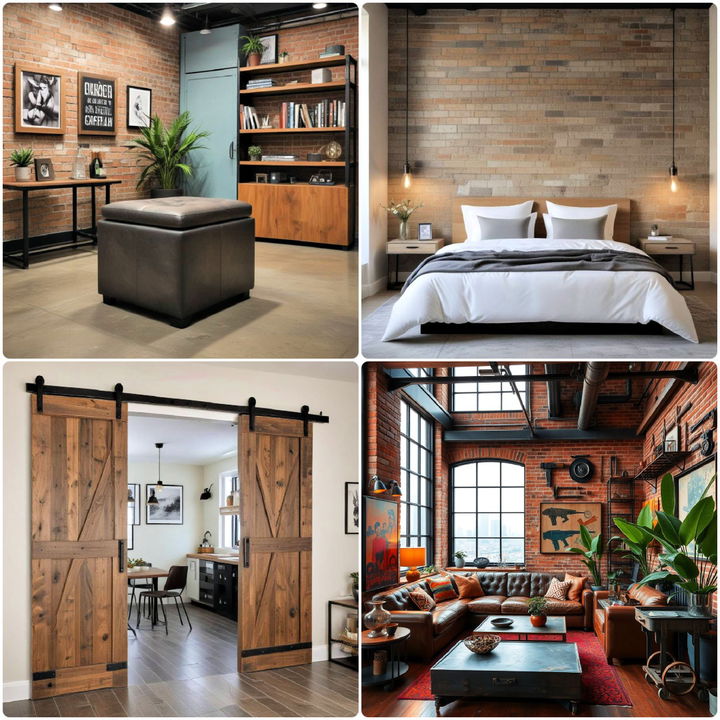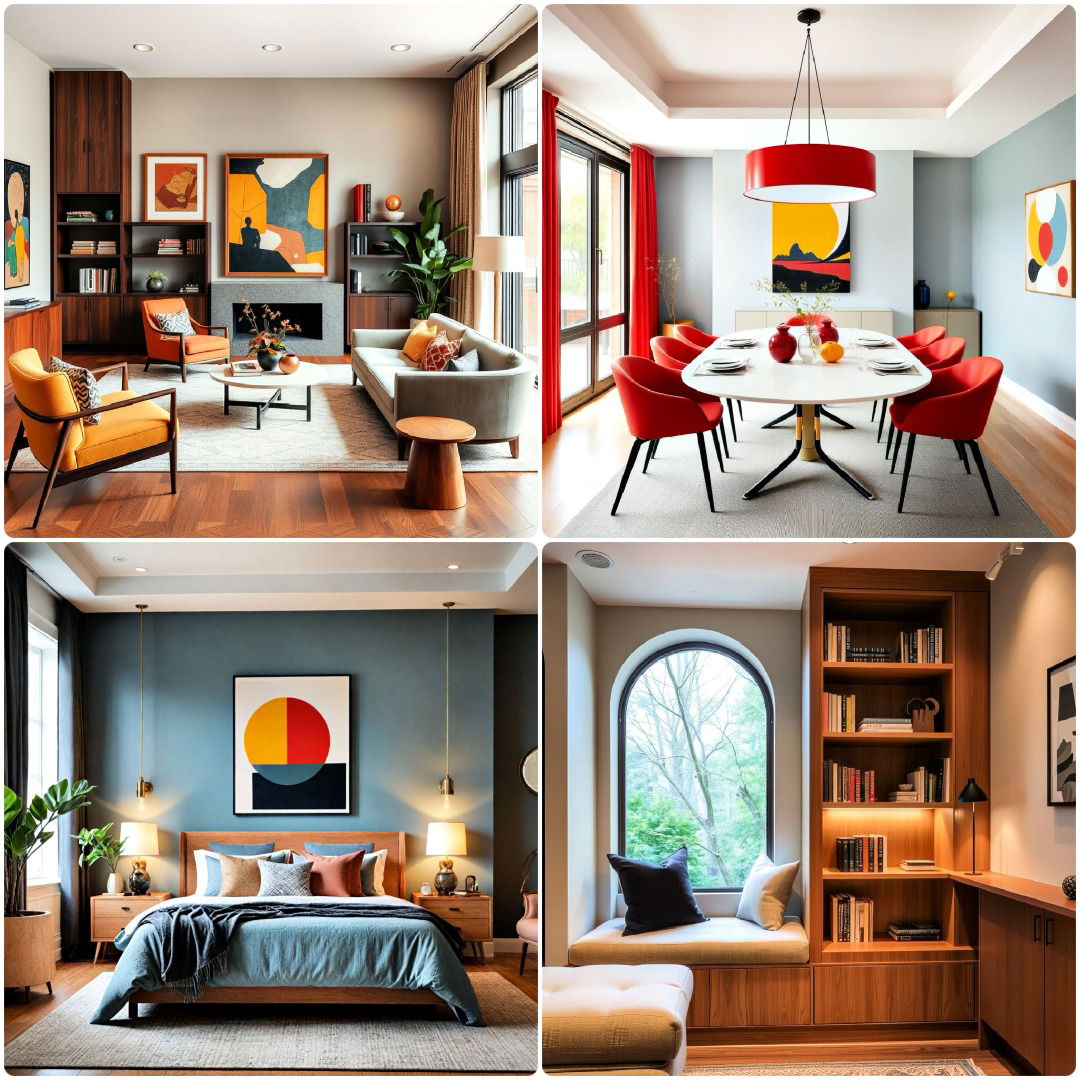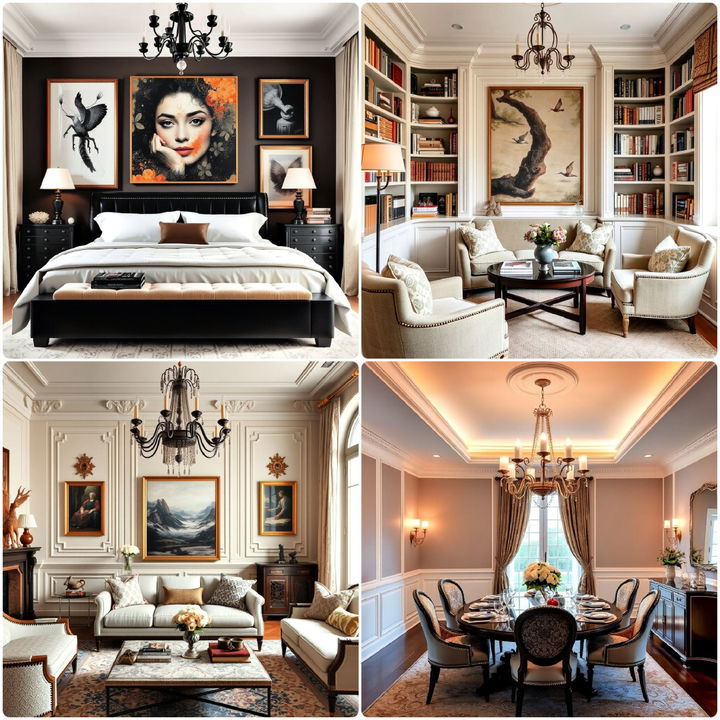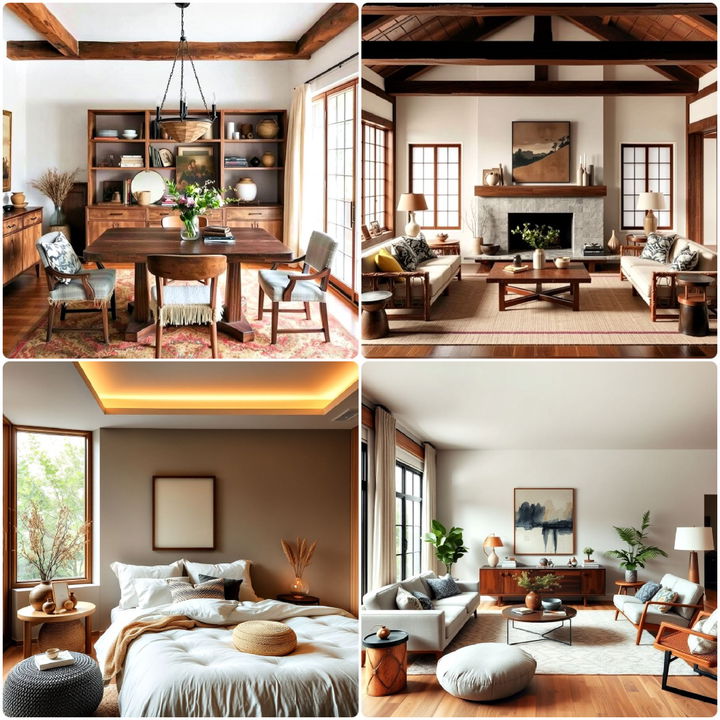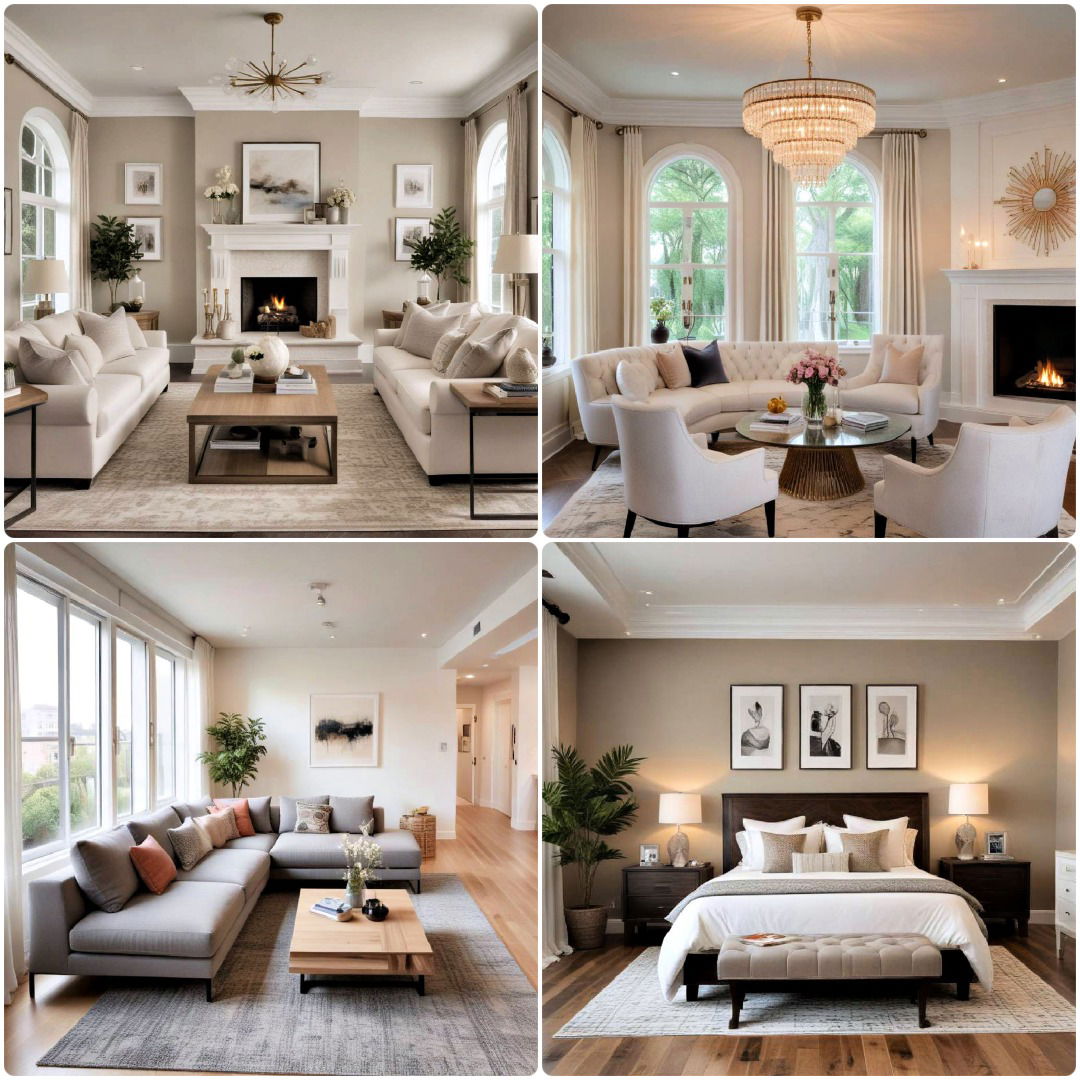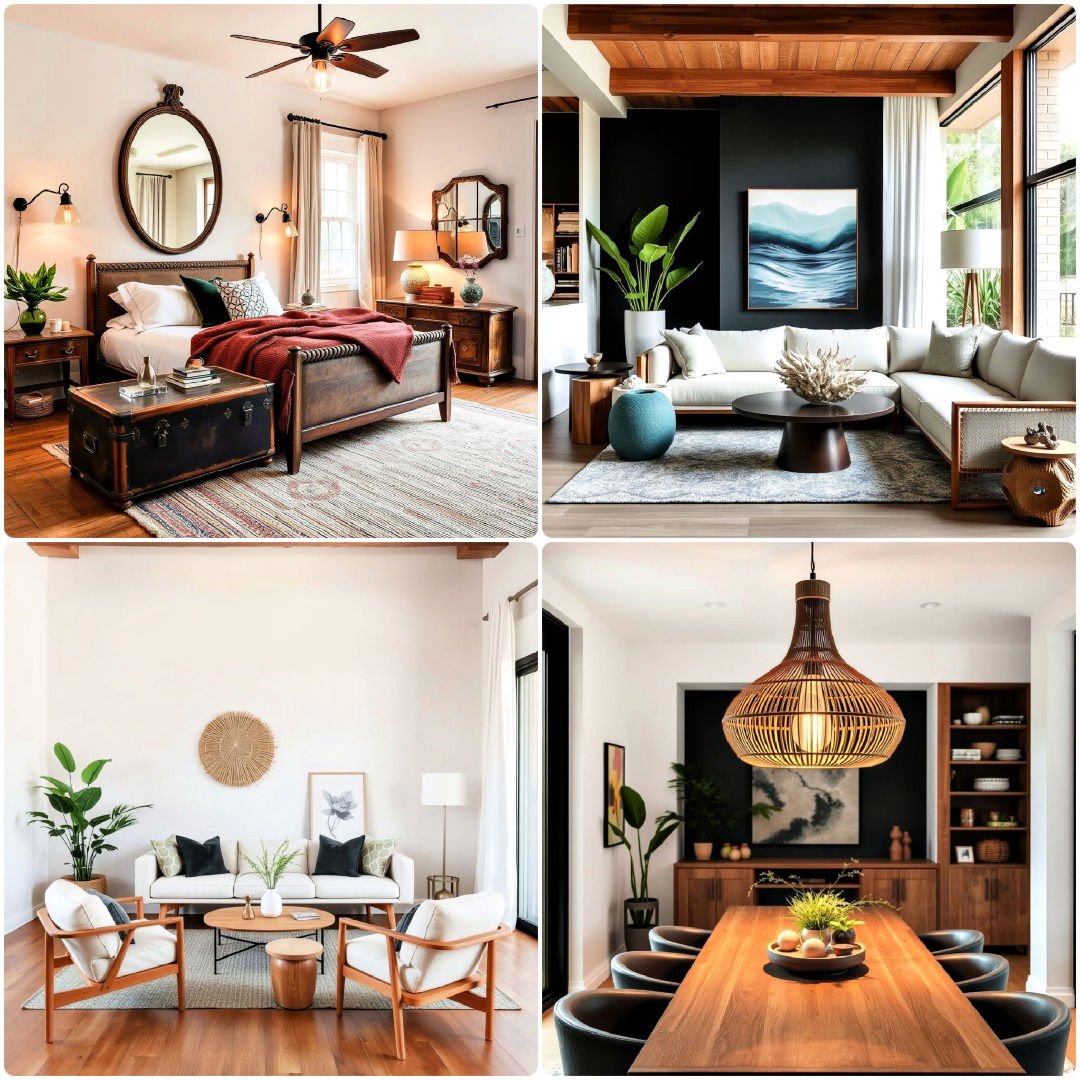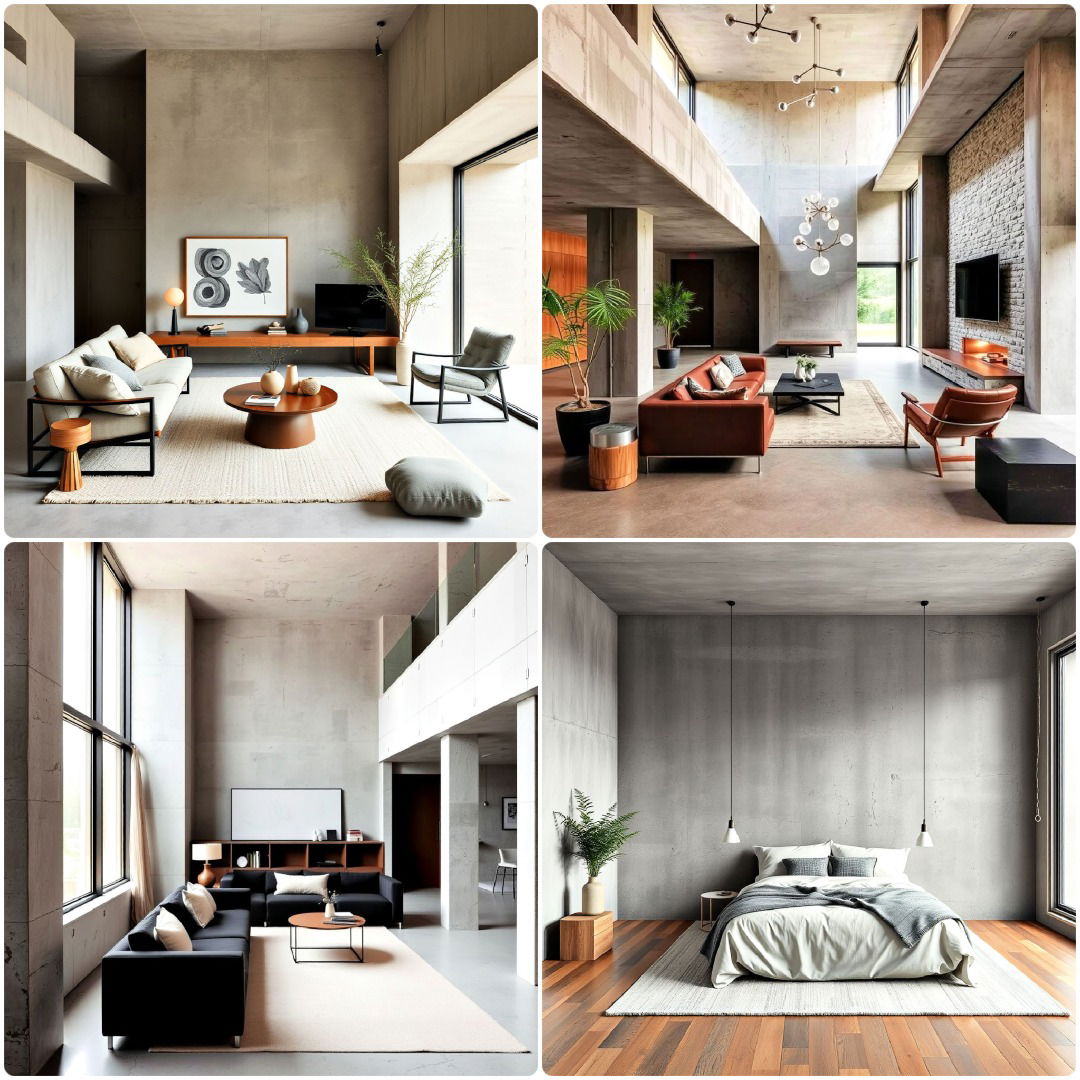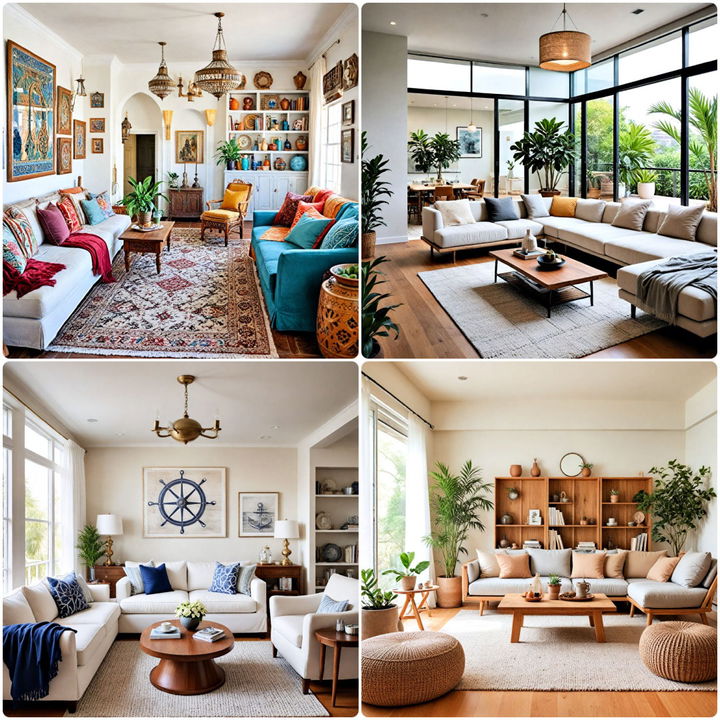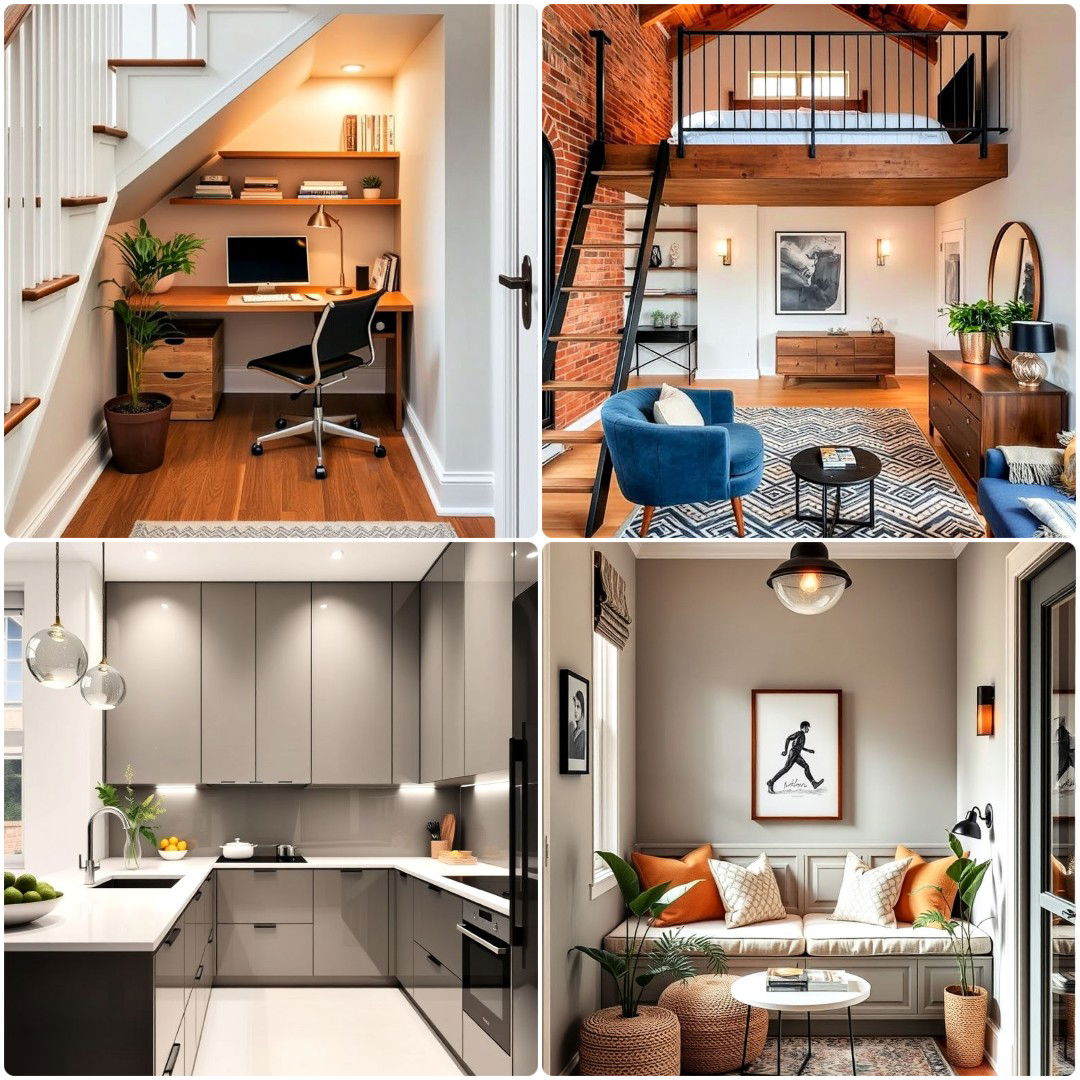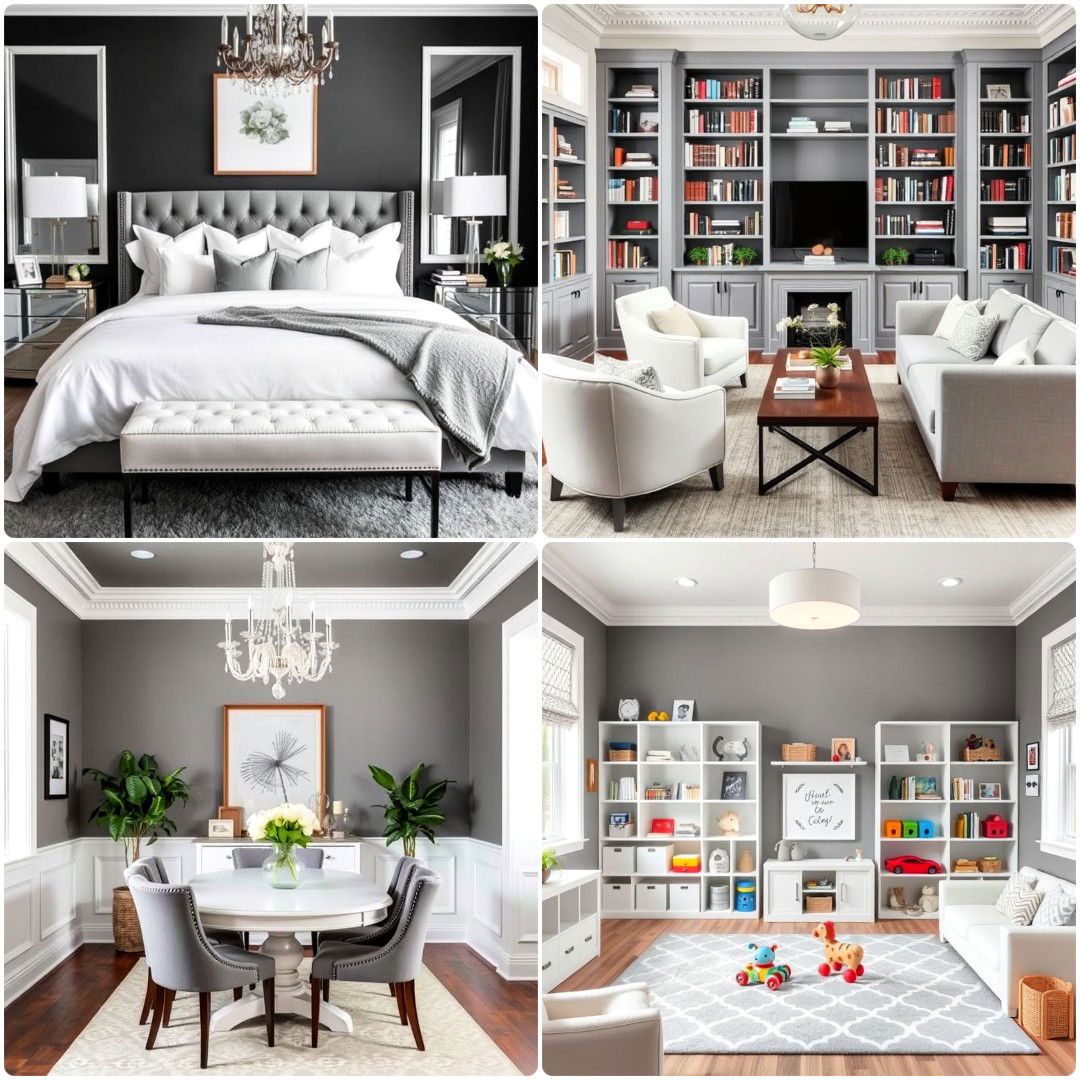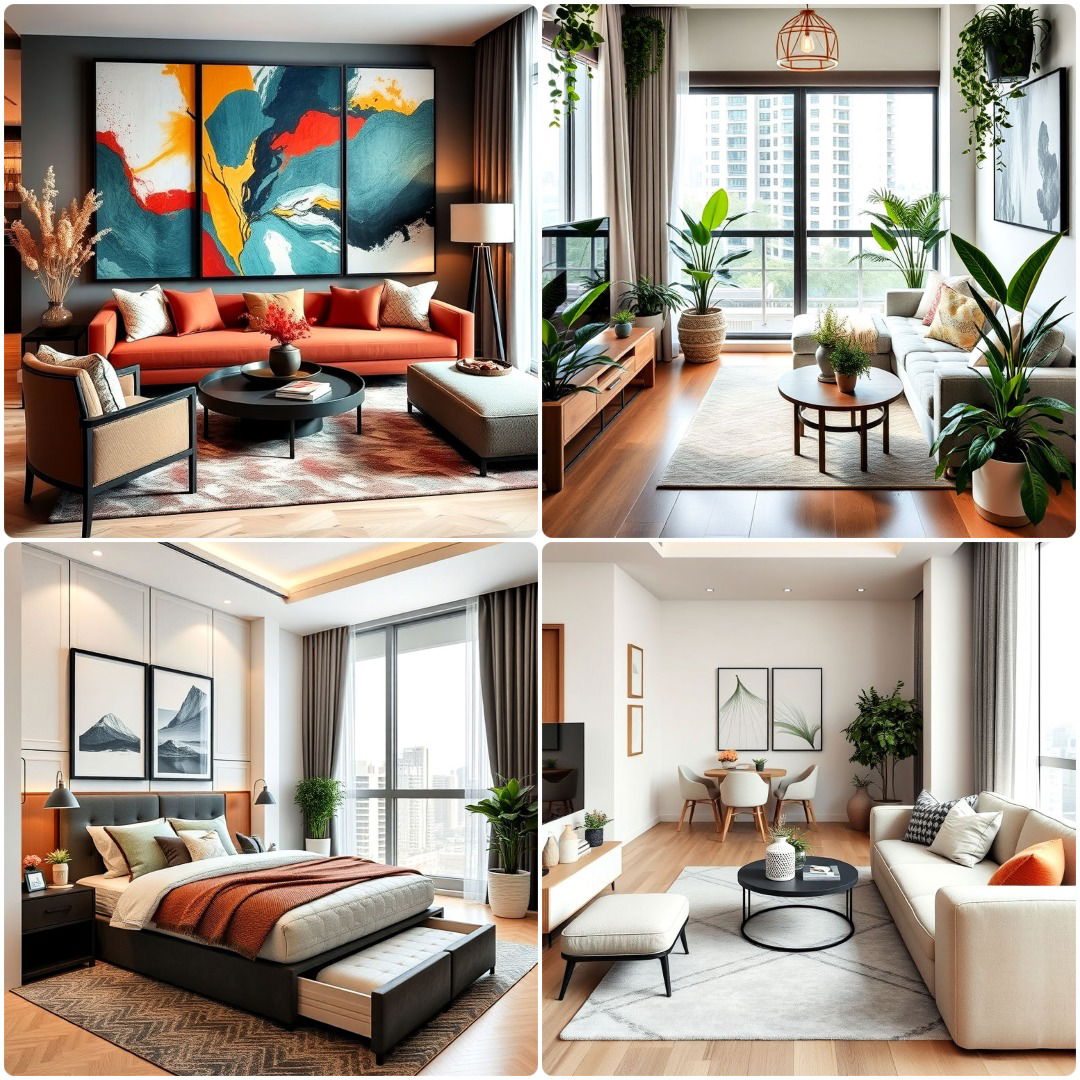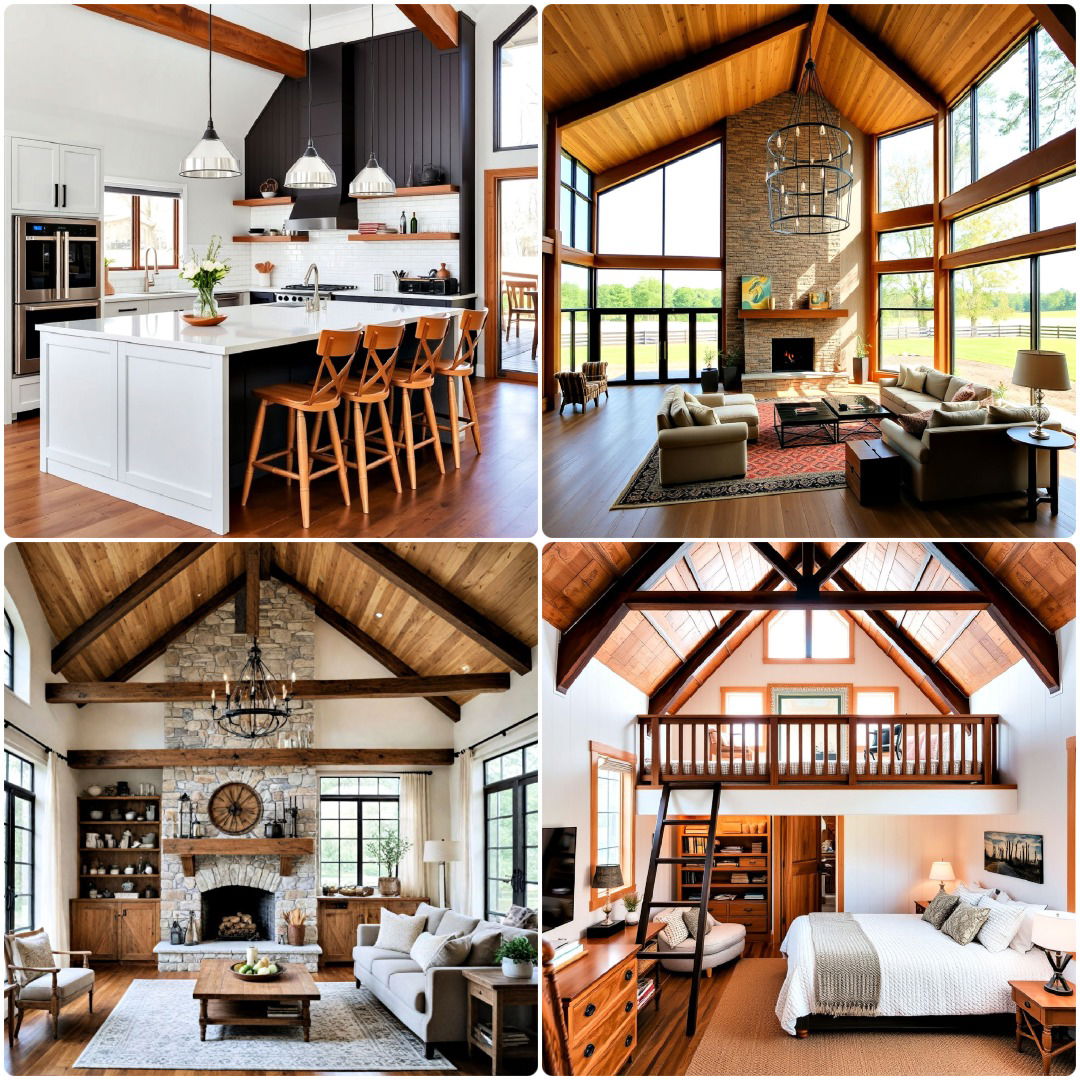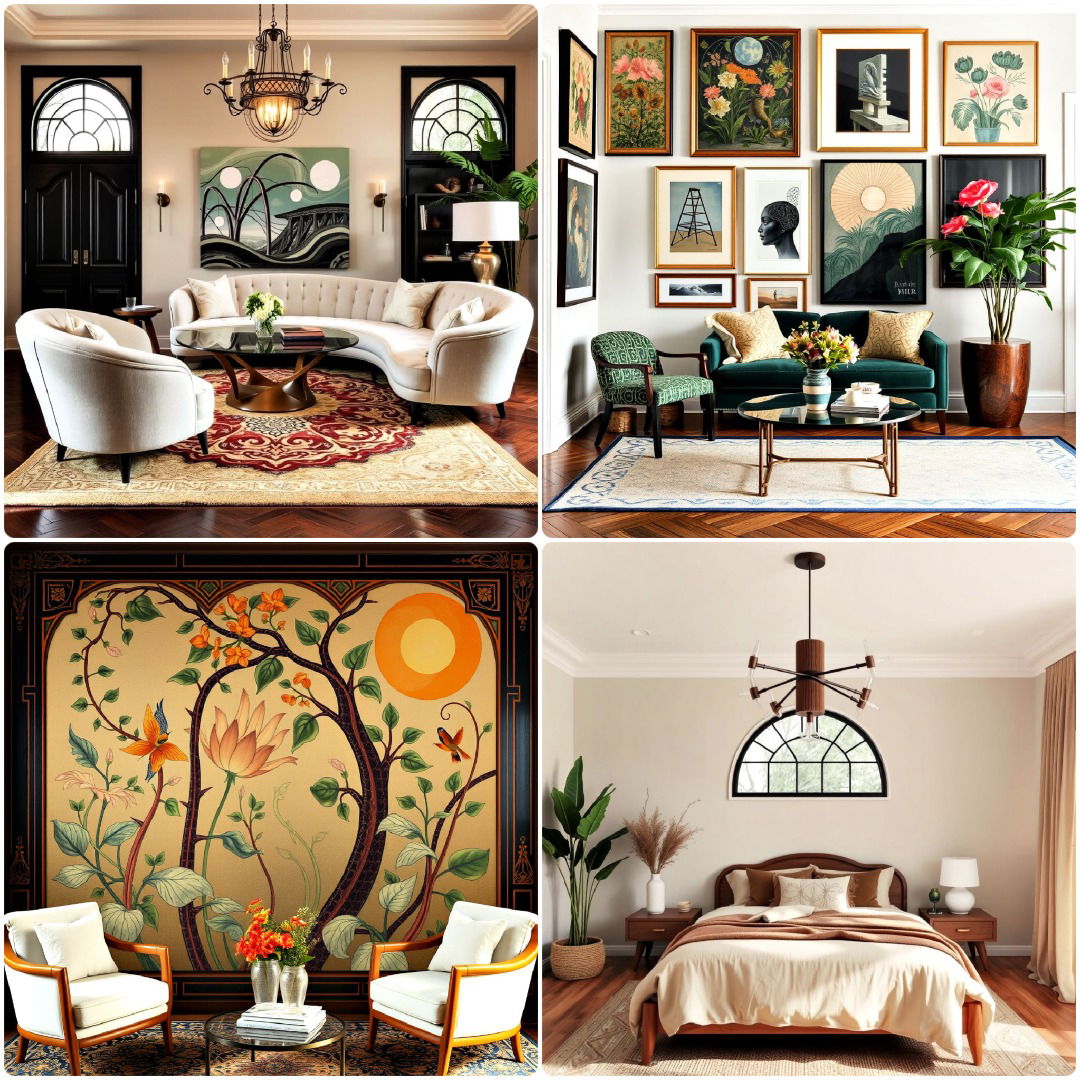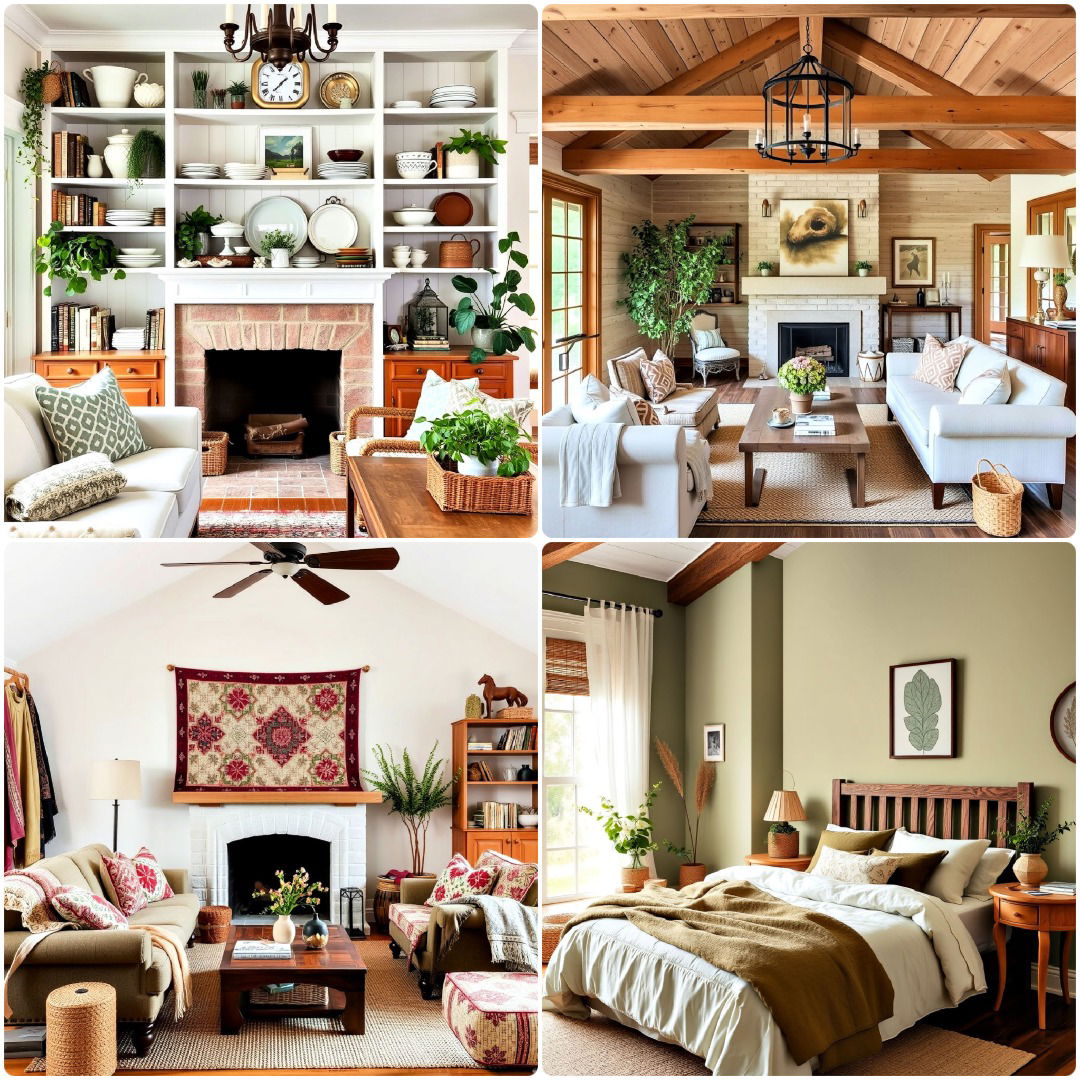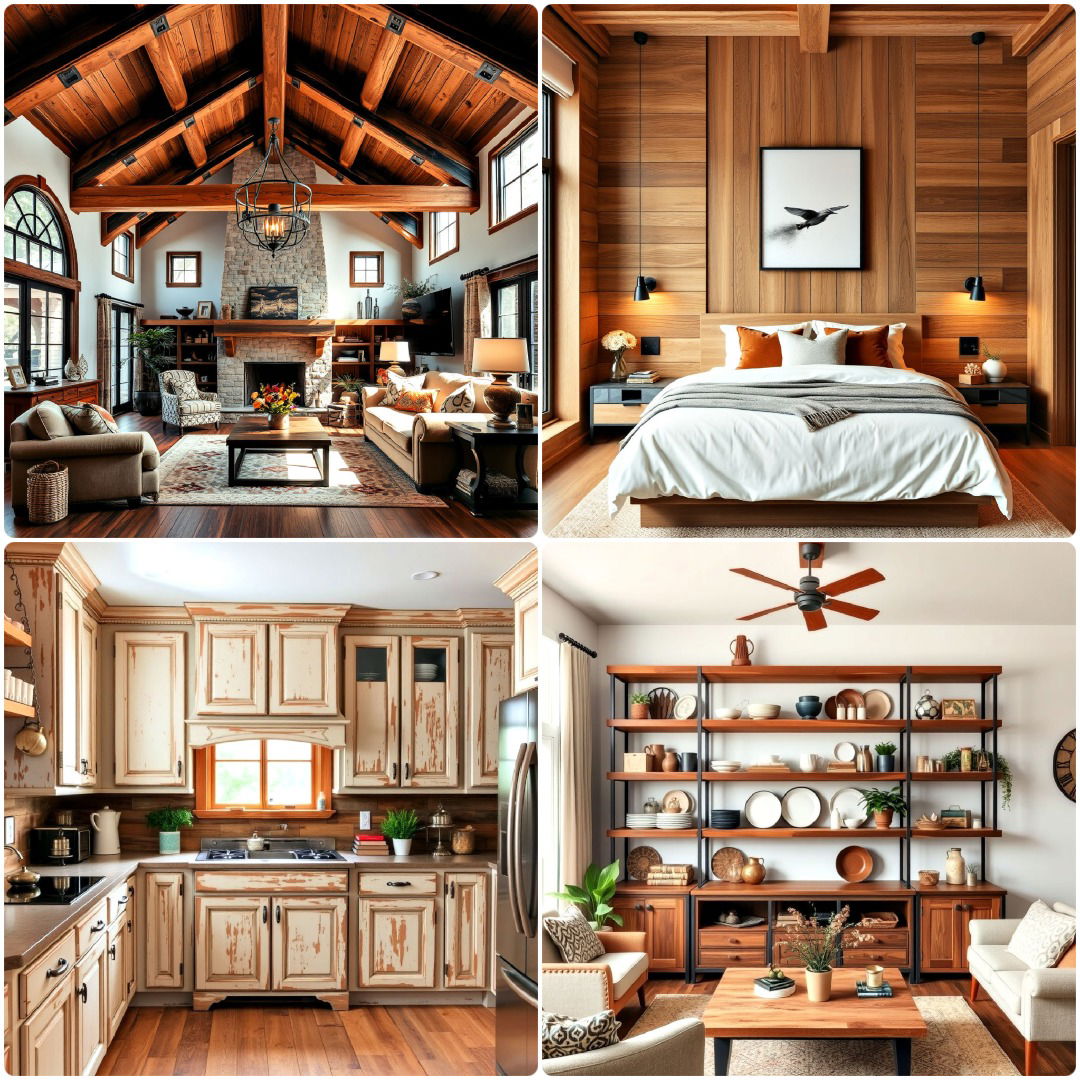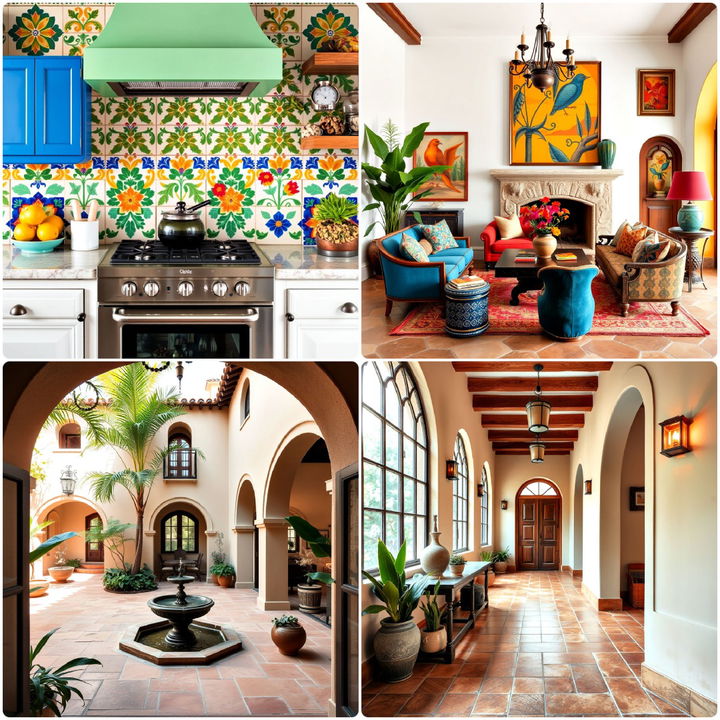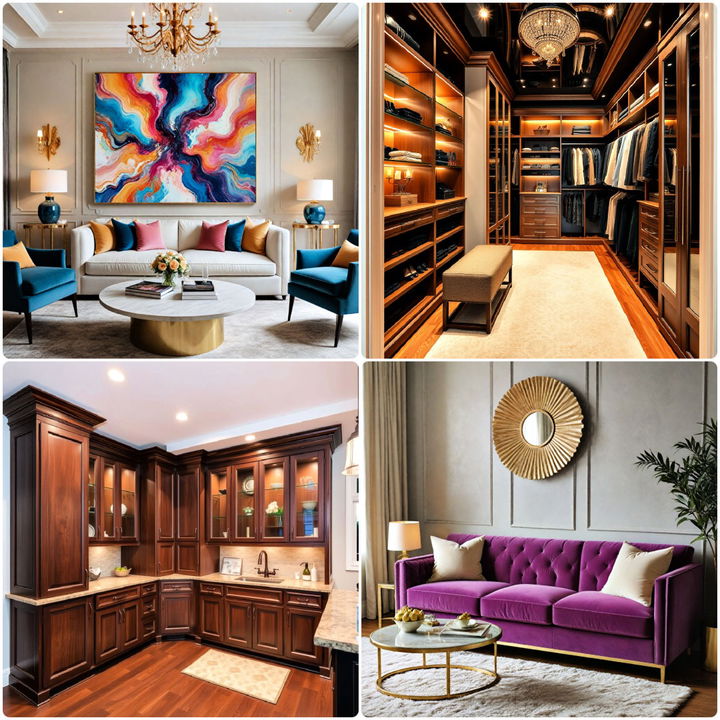In a world that often feels chaotic and overwhelming, our homes should offer a respite – a sanctuary of peace and simplicity. This article is your guide to achieving just that through the power of minimalist interior design. We'll delve into the core principles of minimalism and explore how they can transform your living spaces into havens of tranquility.
Minimalism isn't about deprivation; it's about intentionality. By decluttering and focusing on essential elements, you'll create a home that fosters clarity, focus, and a sense of calm. You'll discover the joy of living with less, appreciating the beauty of open spaces, and curating a home that reflects your true self.
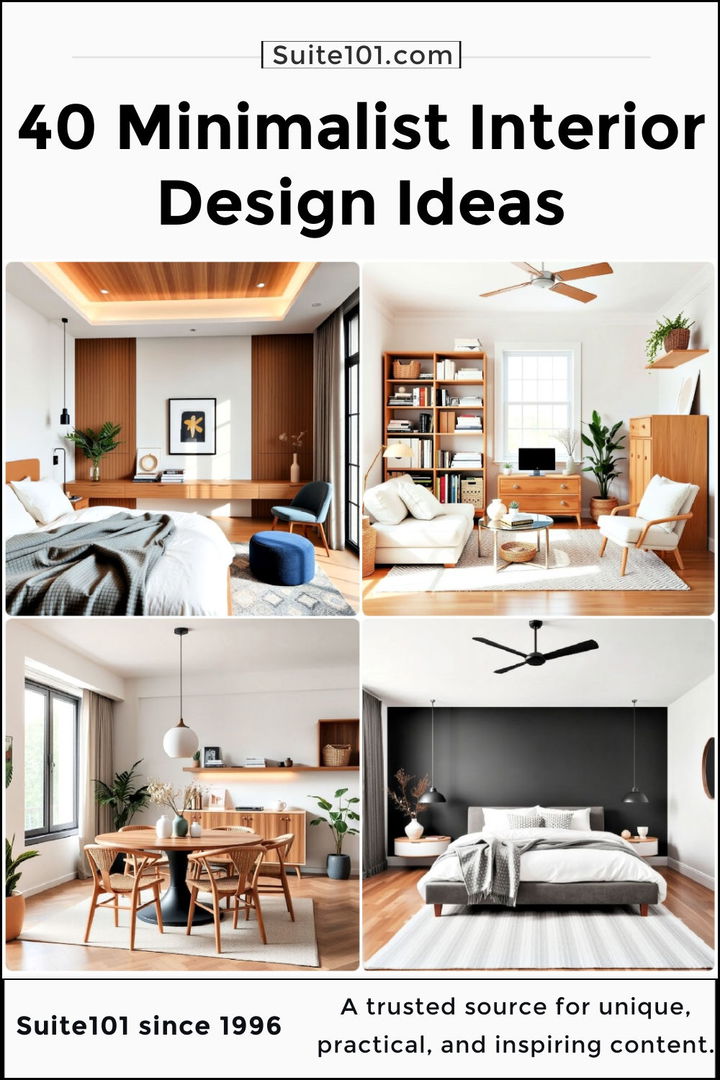
Discover these 40 inspiring minimalist design ideas, covering every room in your home. From decluttering strategies to furniture choices and color palettes, we'll provide practical tips to help you embrace the minimalist aesthetic. Whether you're starting from scratch or seeking to simplify your existing decor, these ideas will empower you to create a home that nurtures your well-being.
1. Declutter and Organize
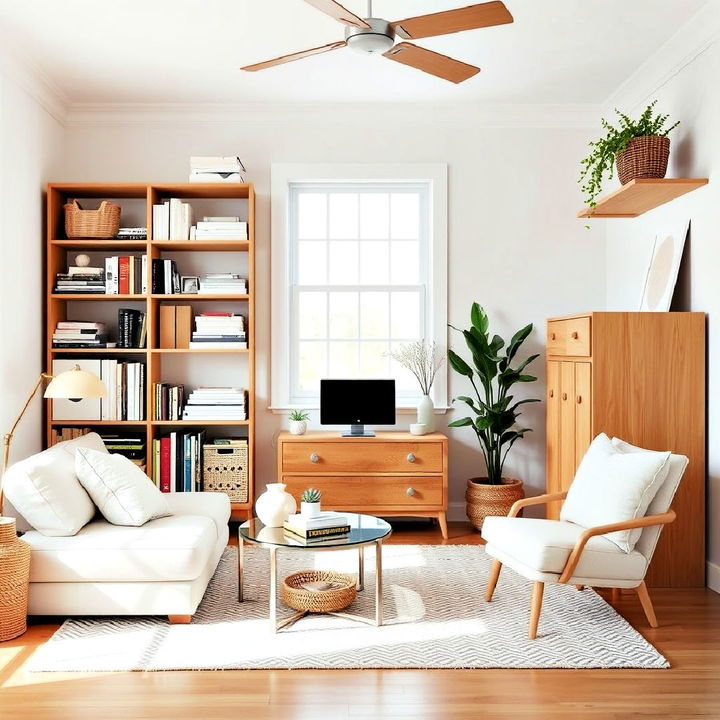
Streamline your space by focusing on decluttering and organizing. Only keep items that serve a purpose or bring joy. This approach allows for an uncluttered, serene environment that can elevate the appeal of any room. By minimizing excess, you create a clean, open space that is both functional and pleasing to the eye.
2. Neutral Color Palette
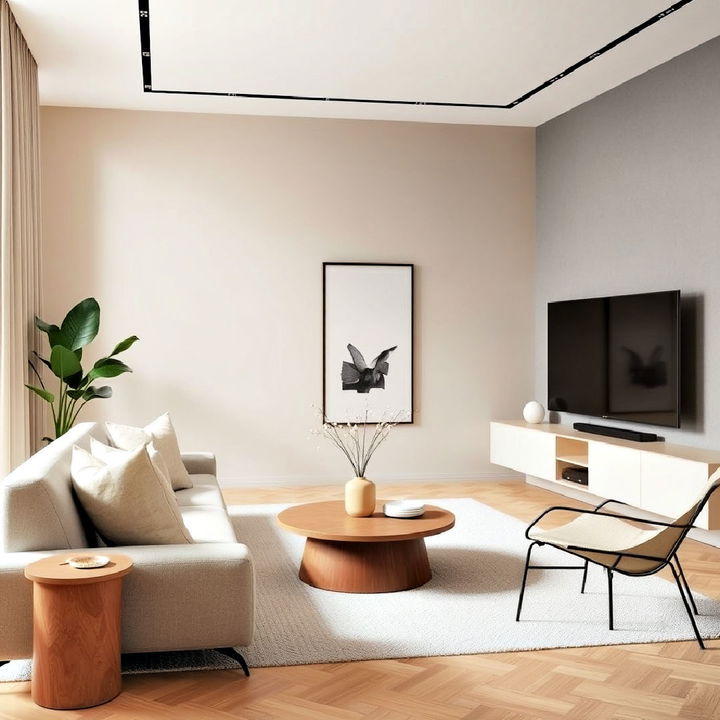
A neutral color palette serves as a versatile backdrop for minimalist design. Whites, grays, and beige tones create a calm and cohesive look throughout your space. These hues are non-distracting, allowing other elements to stand out, while maintaining a sophisticated and modern ambiance.
3. Quality over Quantity

Discover the beauty of minimalist interior design that promotes simplicity and elegance in your space. Invest in quality over quantity when selecting decor and furnishings. High-quality items often stand the test of time both in durability and style. A few well-crafted pieces can add elegance and refinement to any minimalist interior, making your space feel both modern and timeless.
4. Natural Light
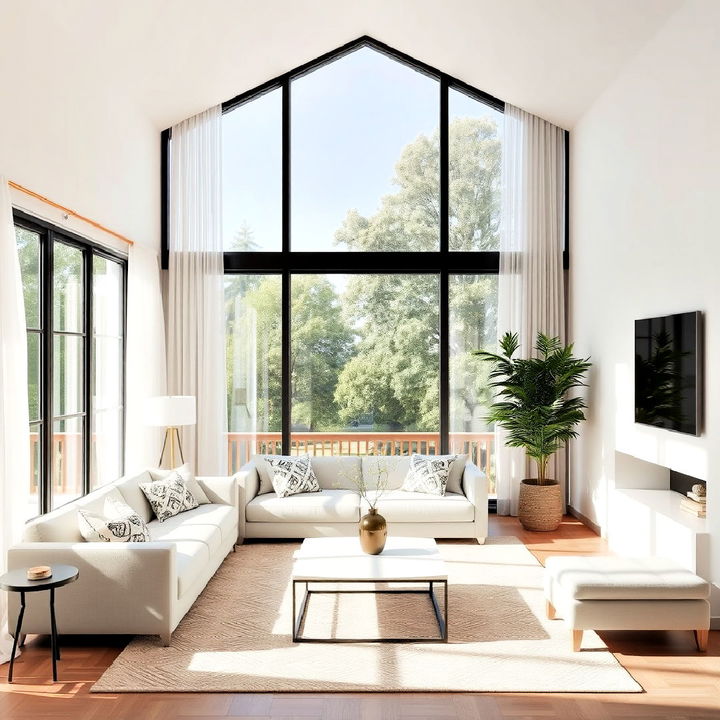
Maximize natural light to enhance the minimalist aesthetic. Large windows, sheer curtains, and strategically placed mirrors can amplify light, creating a bright and welcoming atmosphere. Natural light not only makes the space appear larger but also brings warmth and positivity into your home.
5. Functional Furniture

Opt for functional furniture with clean lines and simple designs. Each piece should have a purpose, contributing to the overall harmony of the space. Multipurpose furniture, like a sofa bed or storage ottoman, can be particularly valuable in maximizing utility without compromising on style.
6. Open Spaces
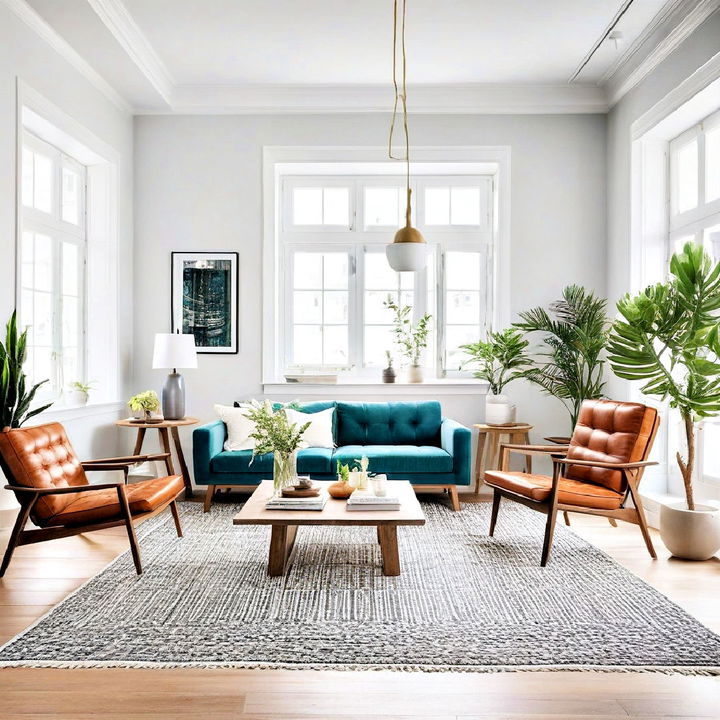
Open spaces promote a sense of freedom and expansiveness. Avoid overcrowding rooms with unnecessary furniture or decor. By leaving ample empty space, you create an airy, inviting environment conducive to relaxation and movement.
7. Simple Decor
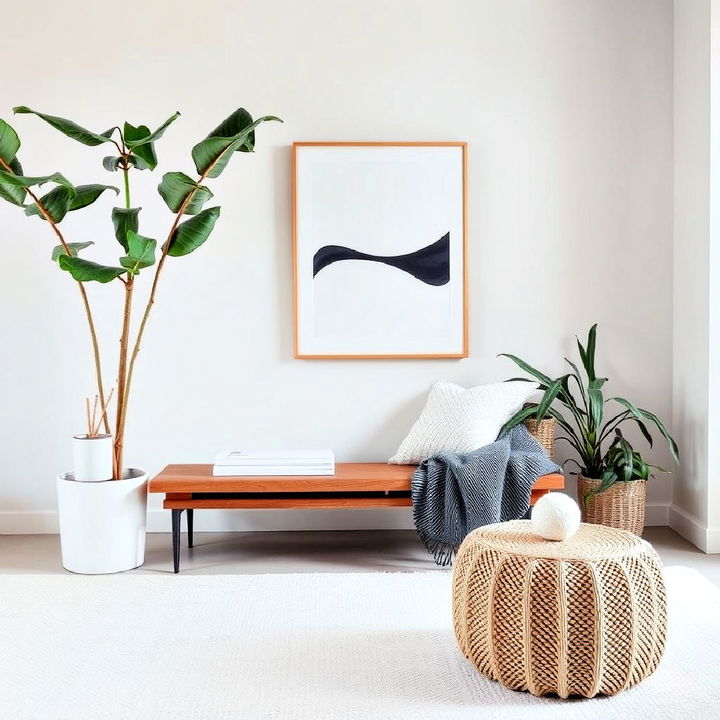
Select simple decor that complements the overall minimalist theme. Choose a few statement pieces rather than a plethora of small items. Artwork, plants, and sparse but impactful accessories can add personality without overwhelming the space, achieving a balance between simplicity and style.
8. Open Shelving

Incorporate open shelving to keep items accessible and visually appealing. Open shelves allow for organization without the need for bulky storage units. Displaying carefully selected items, such as books and decorative objects, can foster a clean, curated look that enhances the minimalist ambiance.
9. Minimal Art
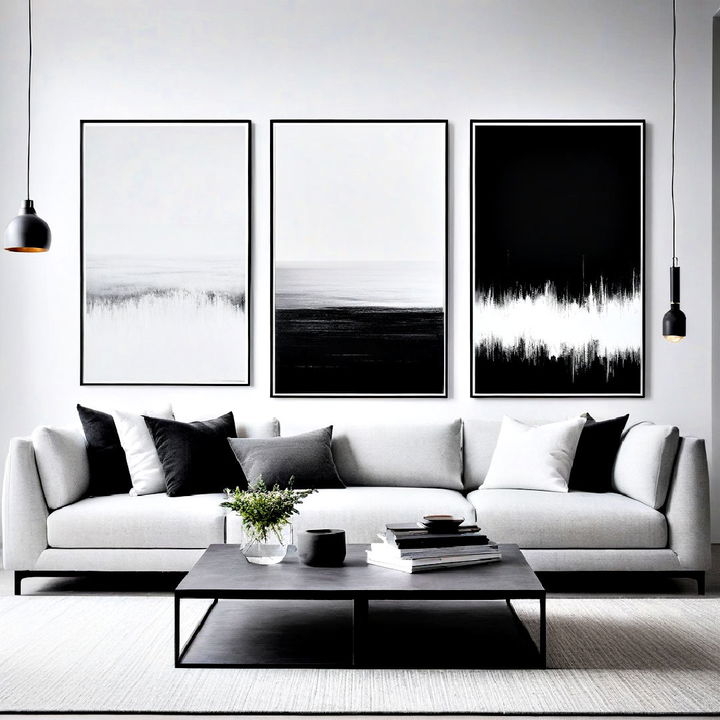
Embrace simplicity with minimalist style interior design for a clean and organized home atmosphere. Use minimalistic art to add character without clutter. Think of single-color canvases, black-and-white photography, or abstract pieces with clean lines. This type of art complements the minimalist backdrop and can draw attention without overwhelming the senses.
10. Hidden Storage
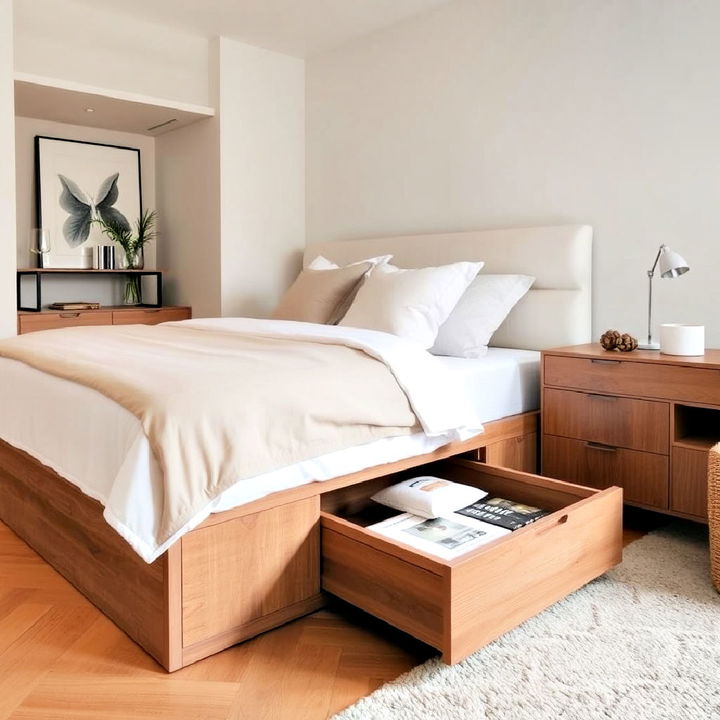
Find creative ways to incorporate hidden storage solutions. Built-in cabinets, under-bed drawers, and multi-functional furniture pieces can stow away essentials without adding visual clutter. Hidden storage maintains the sleek, organized look that is central to minimalist design, ensuring your space remains both practical and elegant.
11. Floating Furniture
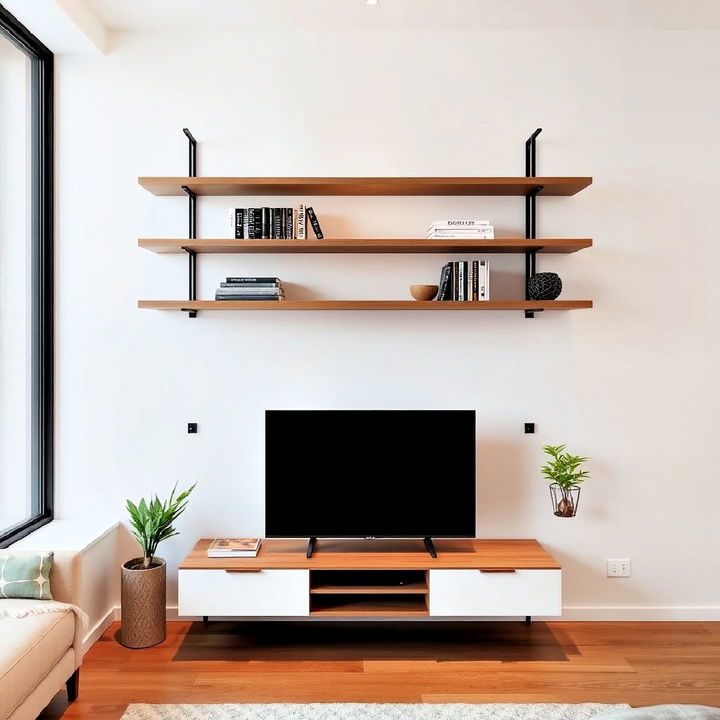
Enhance the sense of space with floating furniture. Wall-mounted shelves, floating desks, and legless sofas can create a sleek, airy look. By freeing up floor space, these elements contribute to a more open, spacious room, promoting a modern and uncluttered aesthetic.
12. Texture Variety
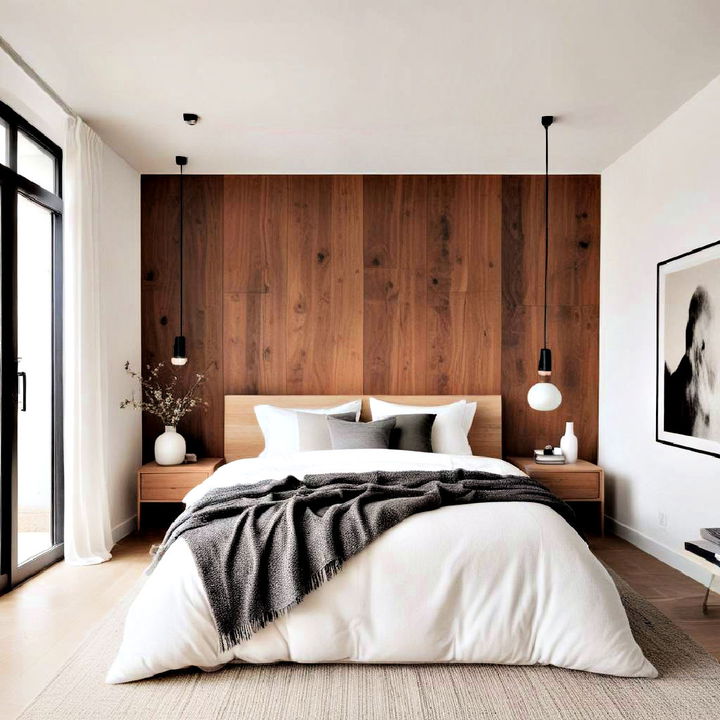
Introduce a variety of textures to add depth and interest. Combining materials like cotton, wool, wood, and metal can enrich your minimalist design. The contrast of textures avoids a flat look, making the space feel warm and inviting while adhering to minimalist principles.
13. Indoor Plants
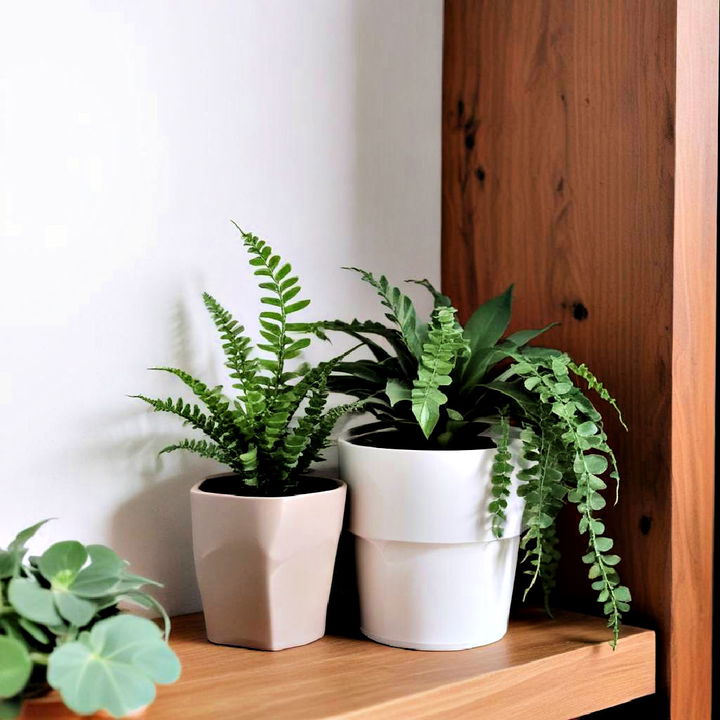
Incorporate indoor plants to bring life and freshness into your space. Plants such as succulents, ferns, or even a simple spider plant can add a touch of nature. They purify the air and offer a subtle pop of color, enhancing the minimalist style without cluttering the room.
14. Monochrome Schemes
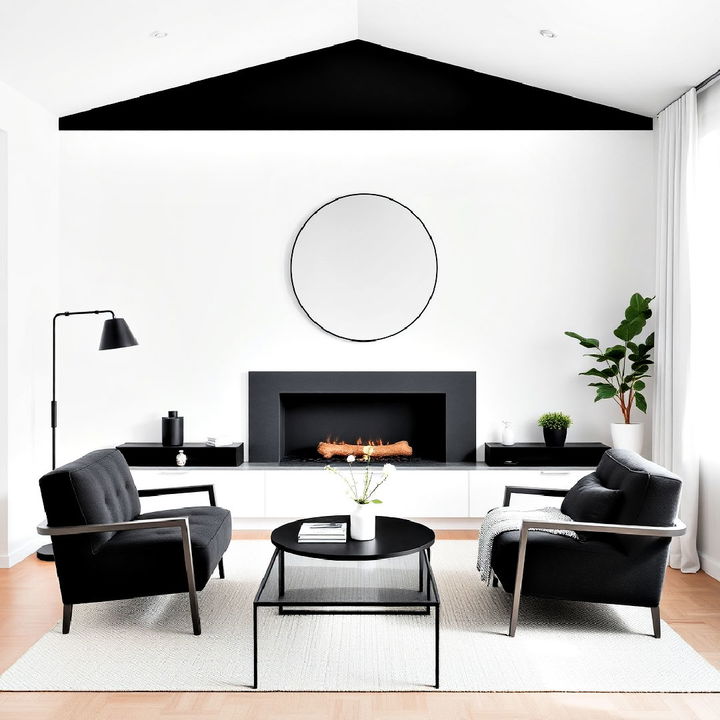
Transform your living space using minimalism interior design to create a serene and uncluttered environment. Embrace monochrome color schemes for a sophisticated, cohesive appearance. Sticking to one primary color, with varying shades and accents, creates a unified look. This approach simplifies design choices and maintains the serene, uncluttered feel that is key to minimalism.
15. Geometric Patterns

Incorporate geometric patterns to introduce subtle visual interest. Simple, clean geometric shapes on rugs, cushions, or wall art can complement the minimalist aesthetic. These patterns should be unobtrusive, maintaining the simplicity and elegance of the design.
16. Thin Frames
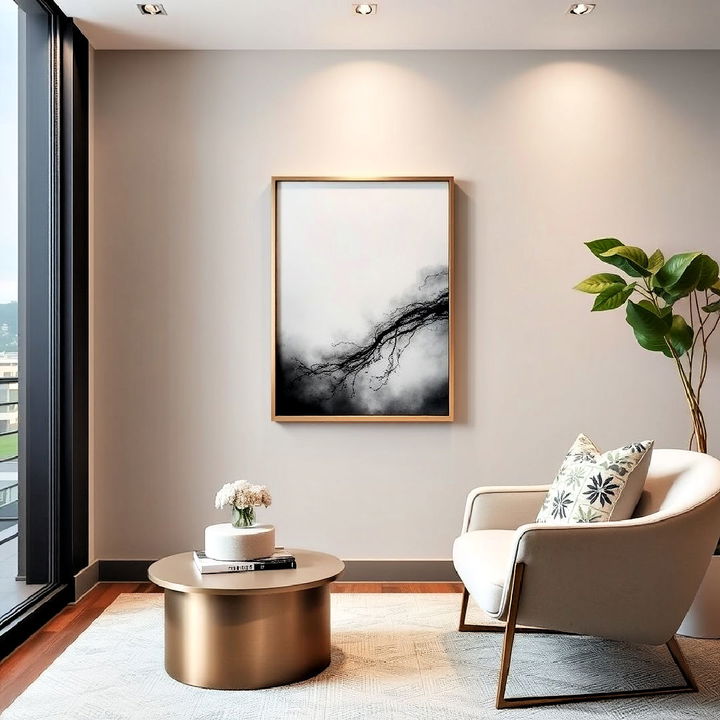
Use thin frames for any hanging artwork or photos. Slim, sleek frames in black, white, or metallic finishes can accentuate art without dominating the space. This minimalist approach ensures that the focus remains on the art itself, aligning with the overall clean aesthetic.
17. Essential Personal Items

Display only essential personal items to maintain simplicity. A curated selection of meaningful objects can personalize your space without adding clutter. Items such as a favorite book, a cherished photo, or a unique souvenir can add character while keeping the design minimal.
18. Clean Lines
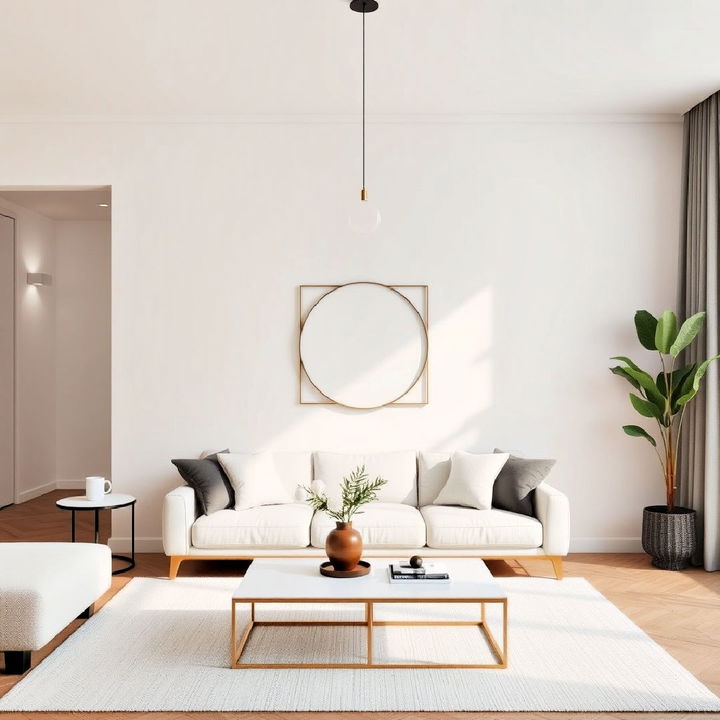
Explore how to achieve a stylish minimalist house interior that maximizes space while minimizing distractions. Focus on clean lines in both furniture and decor. Straight, unadorned lines contribute to a modern, minimalist look. Avoid ornate or overly decorative elements, as these can detract from the streamlined, simple aesthetic that defines minimalist interior design.
19. Soft Lighting
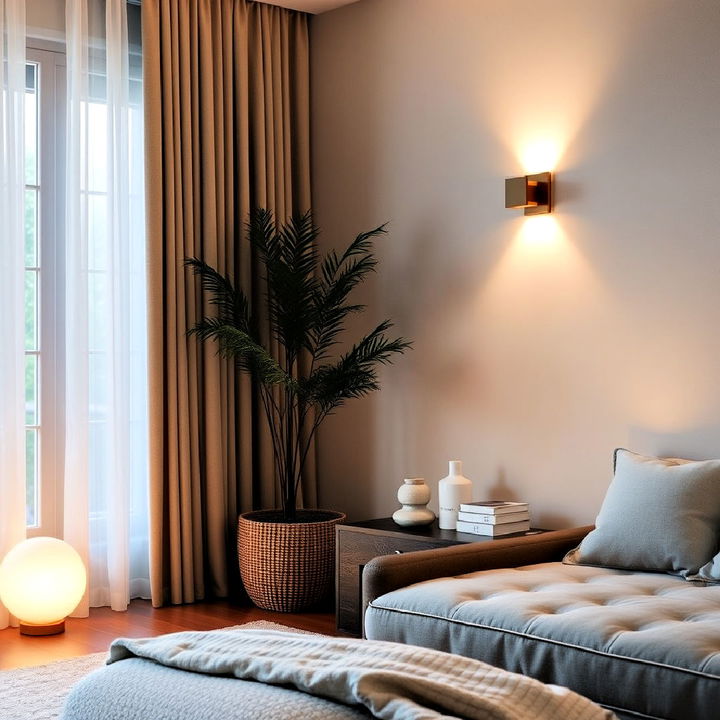
Choose soft lighting to create a serene, welcoming environment. Soft, diffused light from sources like table lamps, floor lamps, or wall sconces can add warmth without harsh glare. This kind of lighting complements the minimalist style, fostering a calm and soothing atmosphere.
20. Invisible Hardware
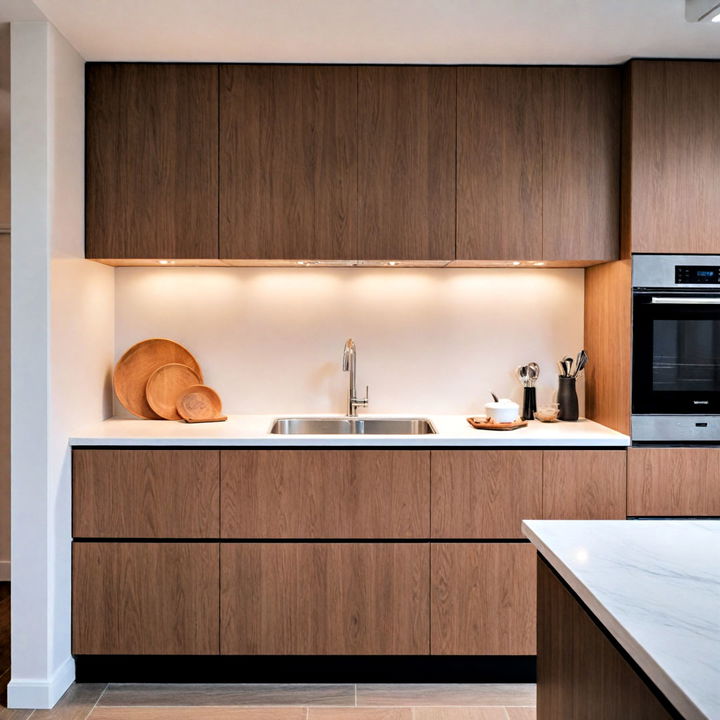
Opt for invisible hardware for a seamless finish. Cabinets, drawers, and doors with hidden hinges or push-to-open mechanisms keep surfaces smooth and unobstructed. This approach enhances the clean, modern look of minimalist interiors, ensuring a clutter-free appearance.
21. Modular Furniture
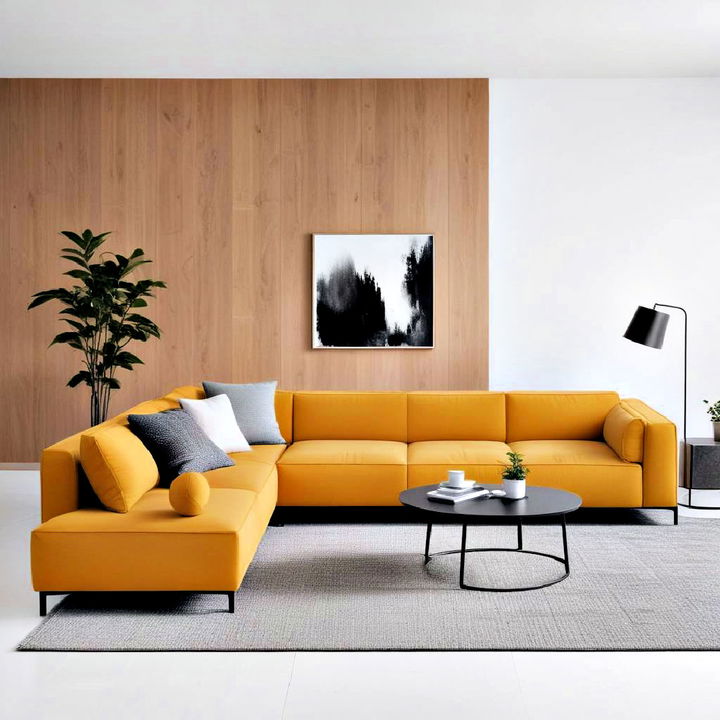
Leverage modular furniture for versatility and adaptability. Pieces like modular sofas or stackable chairs can be easily reconfigured to suit different needs. This flexibility is perfect for minimalist spaces, allowing you to maintain a clean, functional environment that can change as needed.
22. Minimal Window Treatments
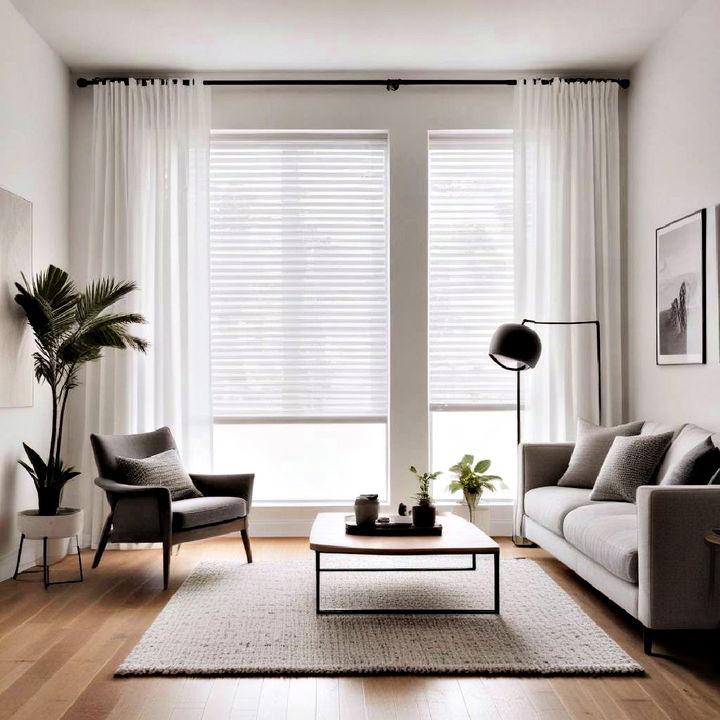
Keep window treatments minimal to maximize natural light. Simple blinds or sheer curtains maintain privacy while allowing light to flood in. This approach ensures a bright, open feel, complementing the minimalist aesthetic without adding unnecessary decoration.
23. Transparent Elements
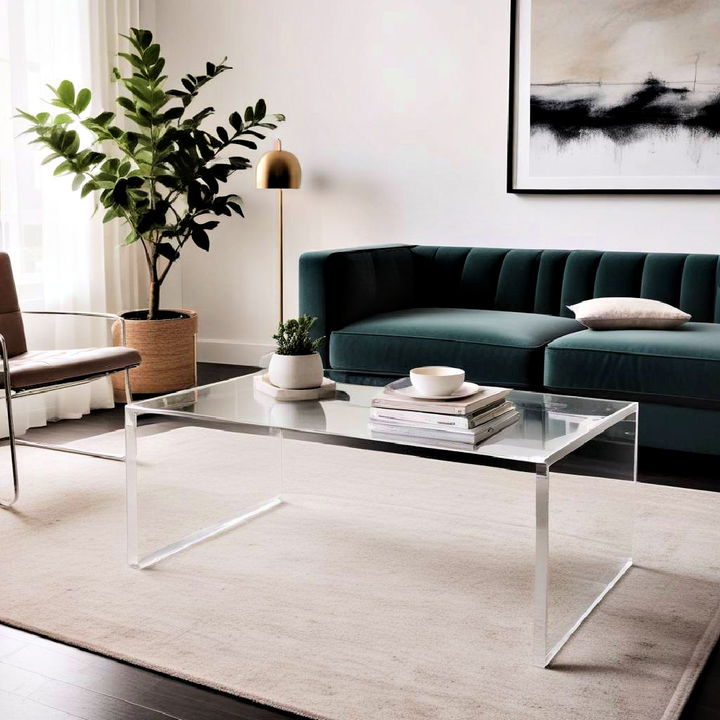
Introduce transparent elements to enhance openness. Furniture or decor made of glass or acrylic, such as glass coffee tables or acrylic chairs, can make the space feel larger. These items serve functional purposes without visually weighing down the room.
24. Symmetry and Balance
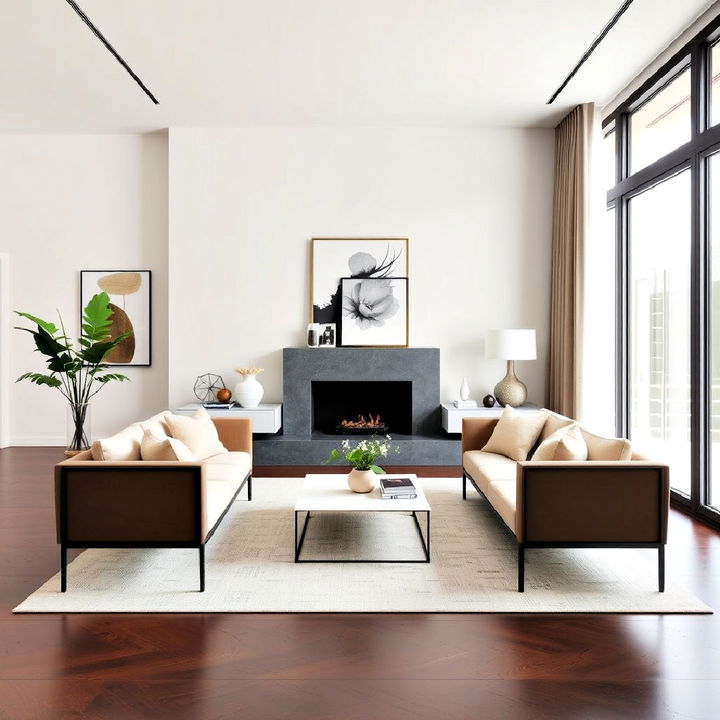
Uncover the essentials of minimalist home design for a tranquil lifestyle focused on functionality and beauty. Focus on symmetry and balance in your layout. Symmetrical arrangements create a sense of order and harmony. Balanced furniture placement and decor keep the eye moving smoothly across the space, reinforcing a calm, organized environment perfect for minimalist design.
25. Minimalist Technology
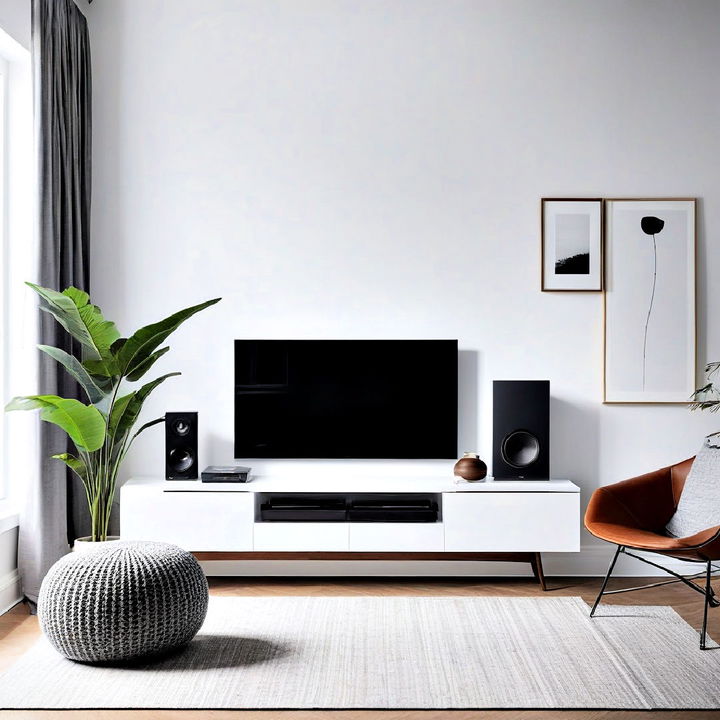
Select minimalist technology designs to complement your interior. Opt for sleek, unobtrusive electronics like flat-screen TVs or discreet speakers. These gadgets should integrate seamlessly into the space, maintaining the clean lines and uncluttered look of a minimalist room.
26. Built-In Furniture
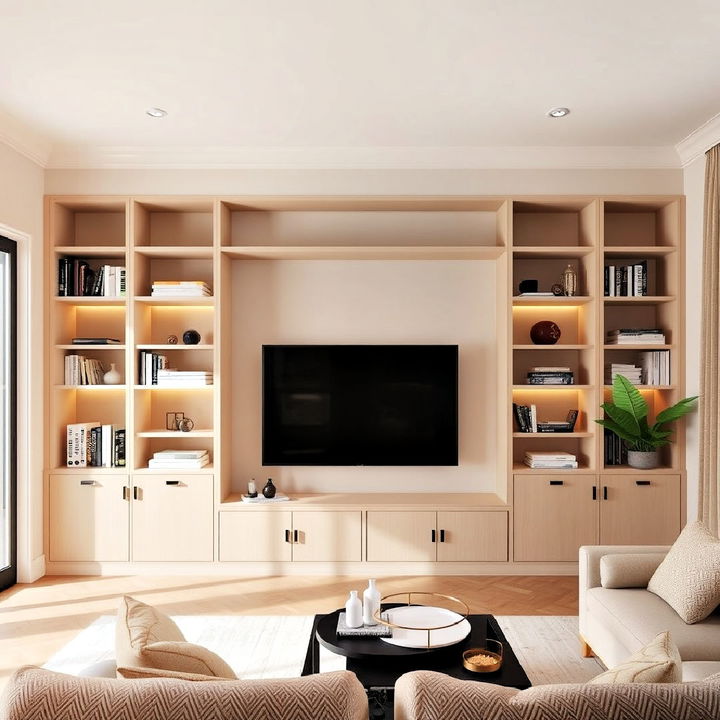
Incorporate built-in furniture for a streamlined appearance. Built-in shelves, desks, or seating blend seamlessly with the architecture of your space. This approach reduces the need for additional furniture pieces, contributing to a more cohesive and uncluttered design.
27. Natural Materials
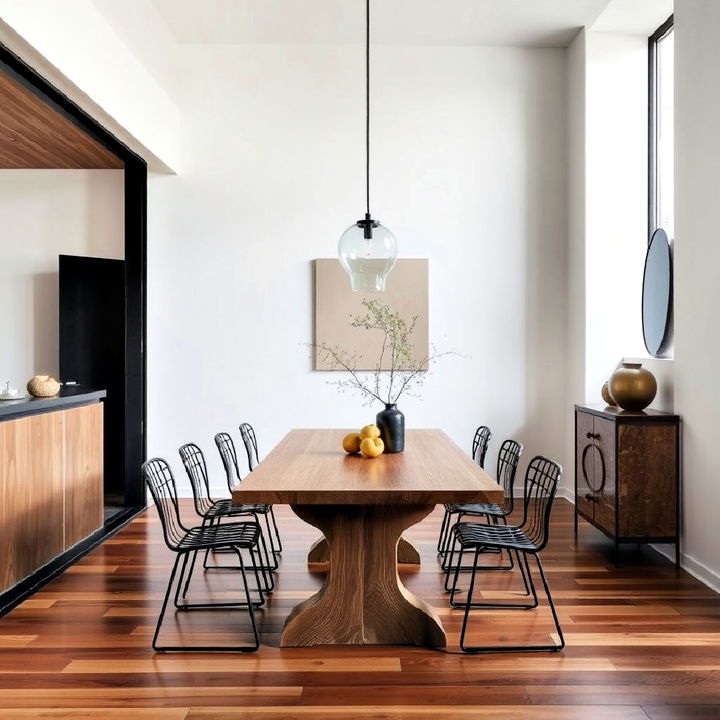
Use natural materials to bring warmth and texture. Wood, stone, and metal can add organic elements to your minimalist space. These materials are durable and timeless, creating a connection to the natural world while maintaining a simple, elegant aesthetic.
28. Clean Surfaces
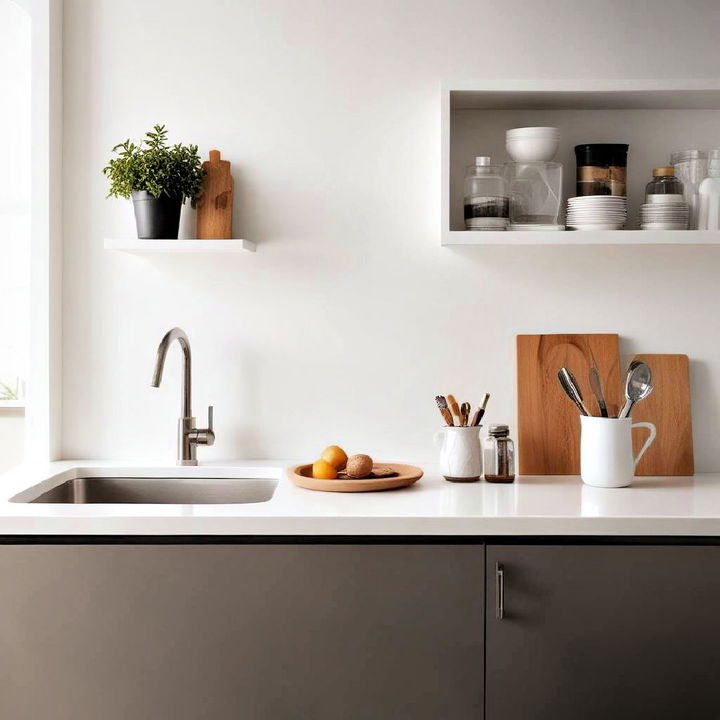
Maintain clean surfaces to enhance the minimalist vibe. Countertops, tables, and desks should be free of excess items. A clutter-free surface not only looks sleek but also makes cleaning and organizing easier, perfect for sustaining the minimalist lifestyle.
29. Contrasting Textures
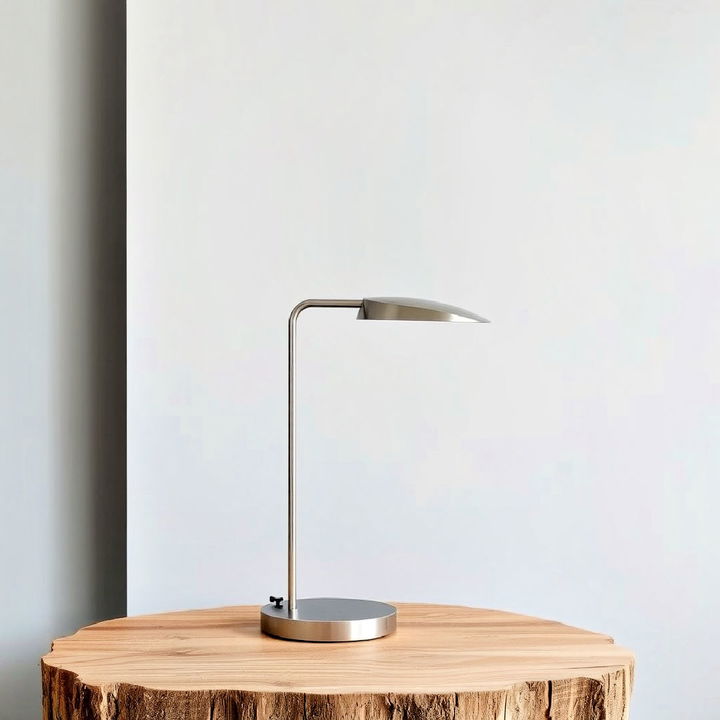
Combine contrasting textures to add depth without clutter. Smooth surfaces juxtaposed with rough textures, like a sleek metal lamp on a rustic wooden table, can create visual interest. This approach enhances the minimalist design by adding complexity in a subtle, refined way.
30. Open Floor Plan
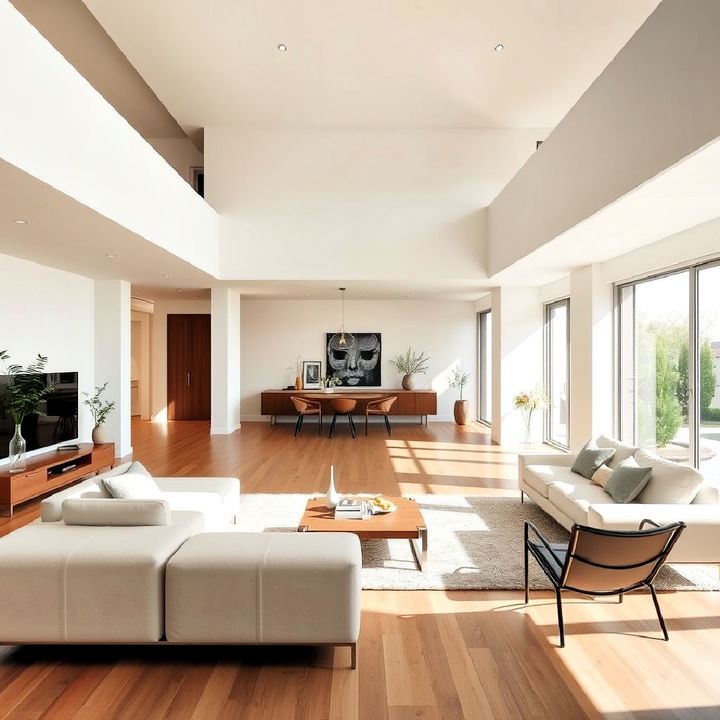
Adopt an open floor plan to maximize space and flow. Removing unnecessary walls and barriers creates a more connected and spacious environment. This layout fosters better movement and light distribution, essential elements in achieving an airy, minimalist interior.
31. Sleek Hardware
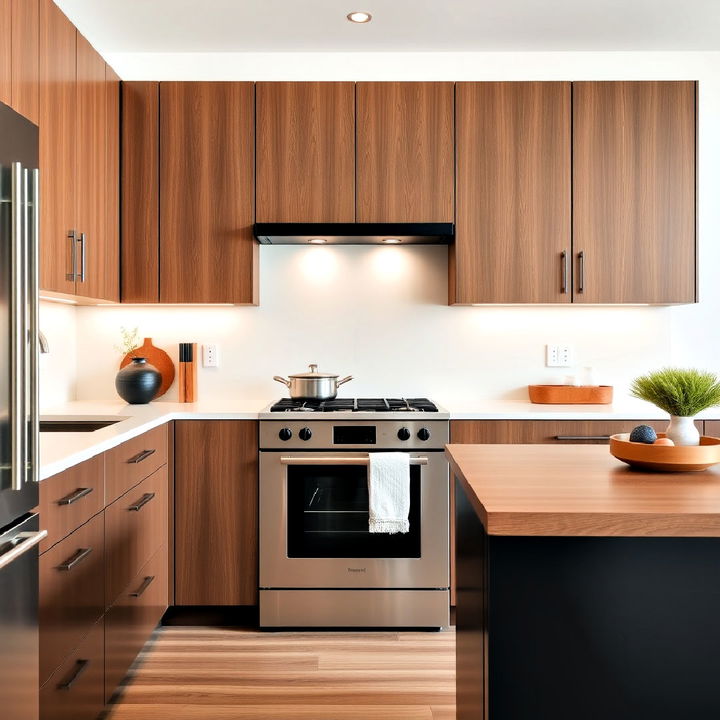
Opt for sleek hardware in your fixtures. Handles, knobs, and pulls in minimalist designs can add a touch of sophistication. Simple lines and clean finishes like stainless steel or matte black ensure your hardware complements the overall minimalist aesthetic without overpowering it.
32. Minimal Patterns
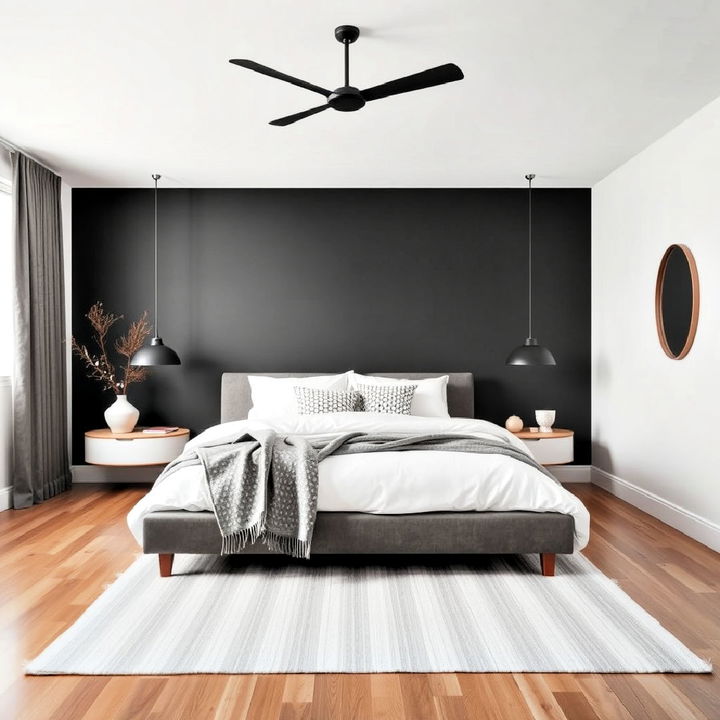
Stick to minimal patterns to keep the focus on clean lines. Limit the use of busy designs and opt for subtle patterns, like a striped rug or a dotted throw. These understated patterns can add interest while staying true to the minimalist theme.
33. Scandi Influence
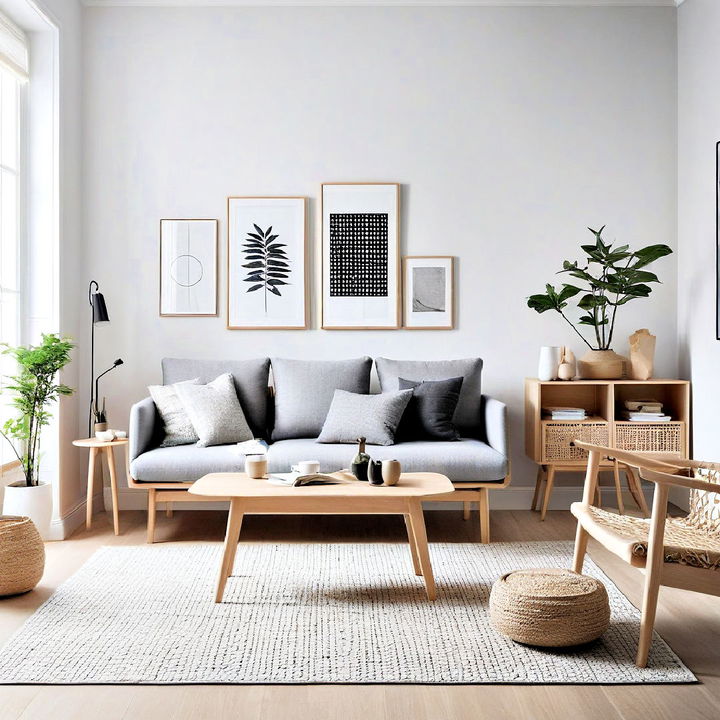
Draw inspiration from Scandinavian design, known for its minimalist yet cozy approach. Use light woods, functional furniture, and neutral colors. The Scandinavian influence combines simplicity with comfort, creating spaces that are both inviting and uncluttered.
34. Minimalist Wall Clocks
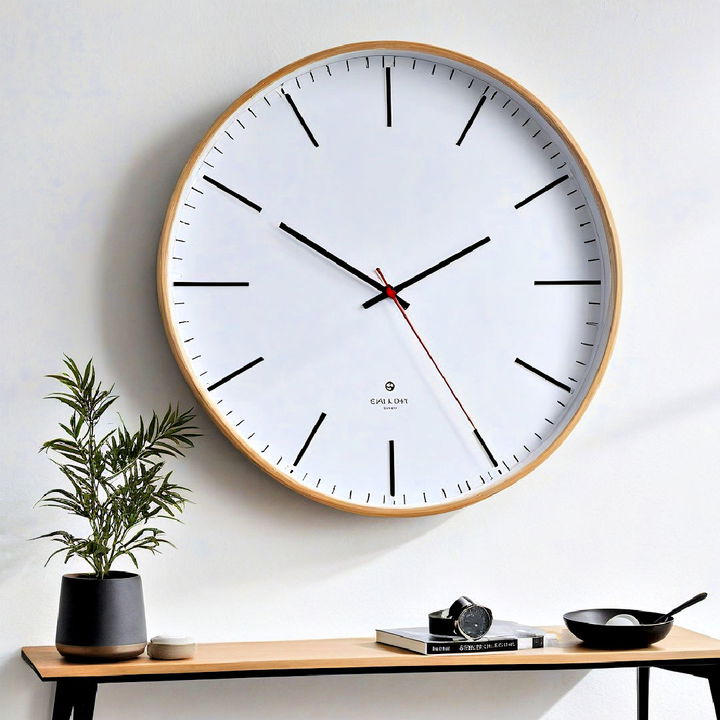
Choose minimalist wall clocks to add functionality without complexity. A simple clock with clean lines and minimal detail can serve as both a timepiece and a piece of art. This addition aligns with the principles of minimalist design, merging utility with style.
35. Built-In Lighting
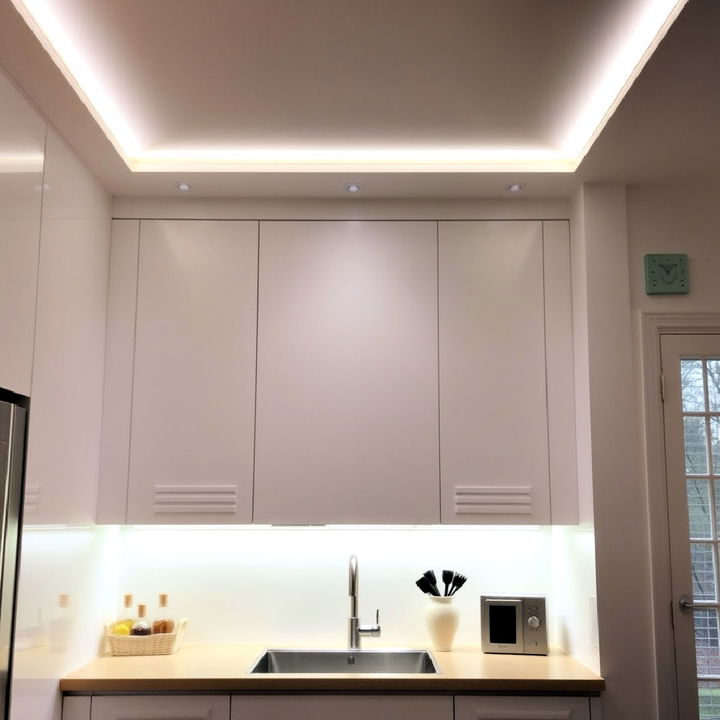
Incorporate built-in lighting to enhance a sleek look. Recessed lights or under-cabinet lighting eliminates the need for bulky lamps, spreading light evenly. Built-in lighting solutions help maintain a clean, uncluttered ceiling and walls, ideal for a minimalist interior.
36. Single Statement Piece

Feature a single statement piece in each room to create a focal point. Whether it’s an oversized painting, a unique sculpture, or a standout piece of furniture, choose something that garners attention. This approach allows you to keep the rest of the space simple while still making an impact.
37. Timeless Pieces
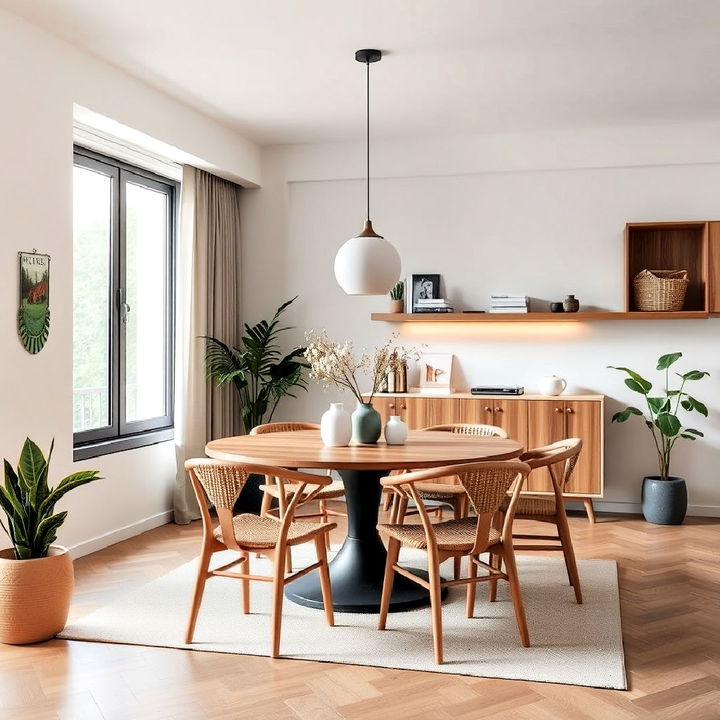
Invest in timeless pieces that will endure. Choose furniture and decor that won’t go out of style, ensuring longevity. This approach not only contributes to a minimalist look but also makes sustainable choices that are both stylish and eco-friendly.
38. Unobtrusive Rugs
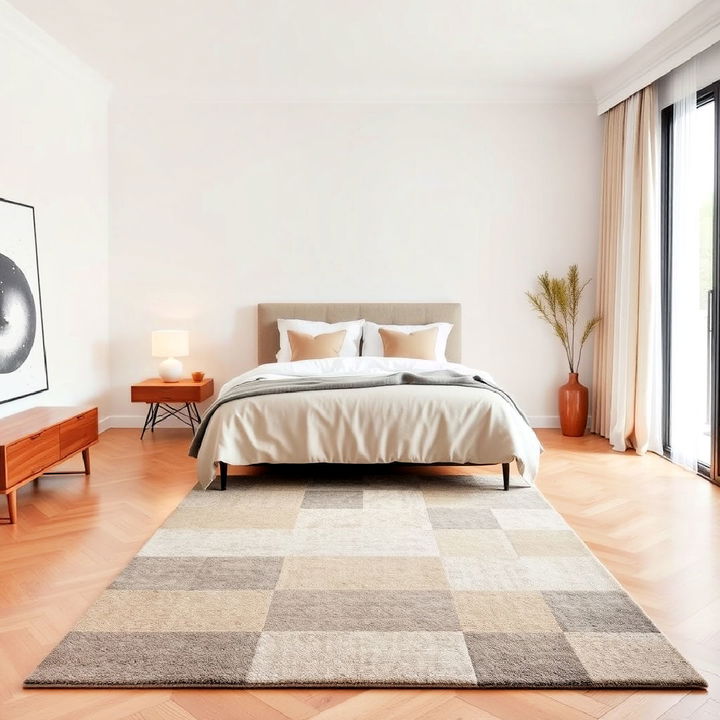
Select unobtrusive rugs to add comfort while keeping a clean look. Choose rugs in neutral colors, with simple designs that blend seamlessly with the flooring. The right rug can add warmth and coherence without detracting from the minimalist aesthetic.
39. Hidden Cords
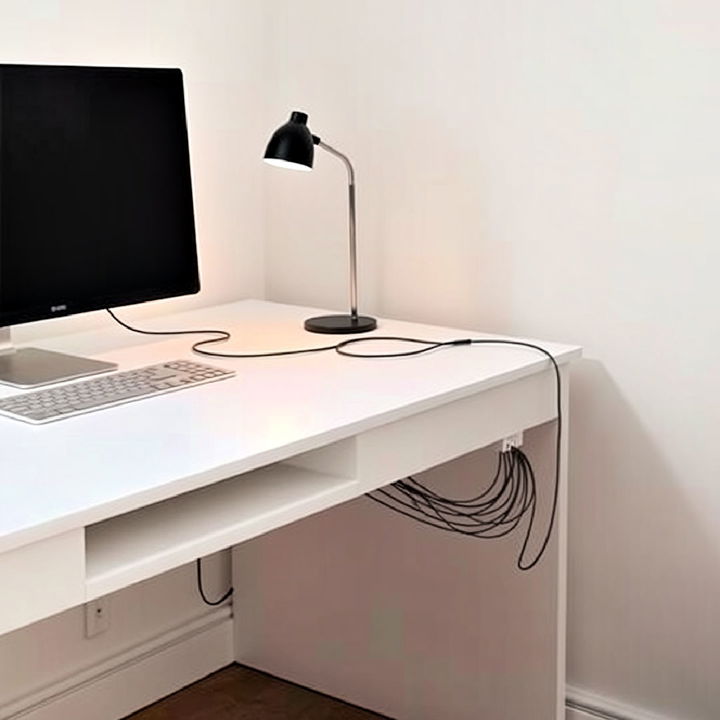
Keep electronic cords hidden to maintain a streamlined appearance. Use cord management systems, furniture with built-in cable storage, or simple zip ties. Hidden cords minimize visual clutter, aligning with the minimalist goal of simplicity and order.
40. Thoughtful Layouts
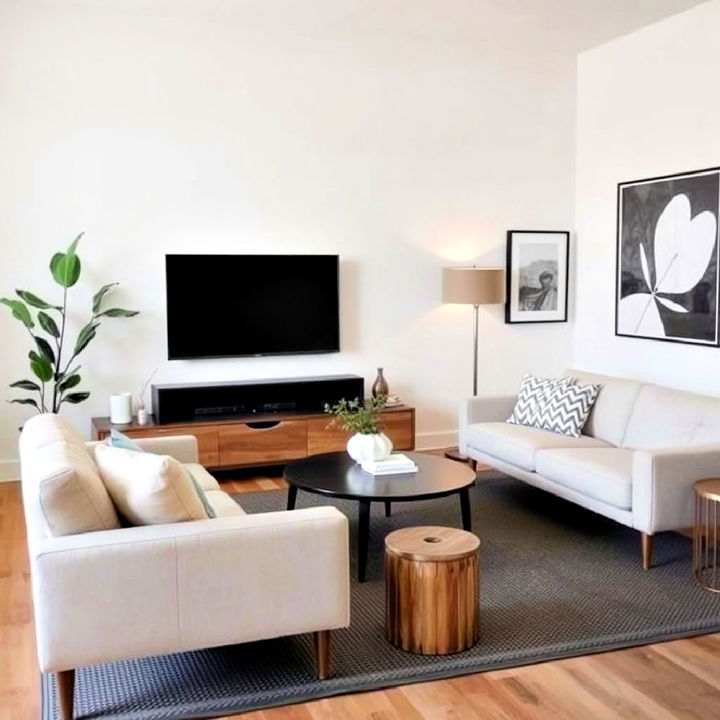
Design thoughtful layouts that enhance functionality. Arrange furniture and decor with purpose, considering flow and ease of movement. Thoughtful placement ensures that the space is both practical and aesthetically pleasing, embodying the core of minimalist design.
Conclusion:
Minimalist interior design offers a pathway to a more peaceful and fulfilling life. By decluttering, embracing negative space, and focusing on quality over quantity, you can transform your home into a sanctuary that supports your well-being. Remember, minimalism is a journey, not a destination. It's about finding what brings you joy and letting go of the rest.
Key Points to Remember:
- Declutter Ruthlessly: Let go of anything that doesn't serve a purpose or bring you joy.
- Embrace Negative Space: Appreciate the beauty of empty walls and uncluttered surfaces.
- Quality Over Quantity: Invest in a few well-made pieces rather than many cheap ones.
- Neutral Colors: Create a calming atmosphere with a palette of whites, grays, and natural tones.
- Natural Light: Maximize sunlight to enhance the sense of openness and airiness.
- Multifunctional Furniture: Choose pieces that serve multiple purposes to save space.
- Hidden Storage: Keep clutter out of sight with clever storage solutions.
- Personal Touch: Add warmth and personality with meaningful objects and artwork.
What to Do Next:
- Start Small: Begin by decluttering one room at a time.
- Create a Capsule Wardrobe: Simplify your closet and streamline your morning routine.
- Digitize: Scan important documents and photos to reduce paper clutter.
- Donate or Sell: Give unwanted items a new life by donating or selling them.
- Be Mindful of New Purchases: Ask yourself if an item truly adds value to your life before buying it.
- Enjoy the Process: Embrace the journey of creating a home that reflects your values and priorities.
Remember, a minimalist home is not just about aesthetics; it's about creating a space that supports your mental and emotional well-being. By following these key principles and incorporating the design ideas shared in this article, you'll be well on your way to a clutter-free, serene sanctuary.

